Numerical and Experimental Study of Topographic Speed-Up Effects in Complex Terrain
Abstract
1. Introduction
2. Wind Tunnel Experiments and Numerical Simulations for a Two-Dimensional Ridge Model
2.1. Overview of the Wind Tunnel Equipment
2.2. Scale Model for the Two-Dimensional Ridge Model
2.3. Airflow Measurement by the I-Type Hot Wire Probe and the Split-Film Probe
2.4. Overview of LES-Based CFD Approach
2.5. Results and Discussion
3. Wind Tunnel Experiments in the Case of Actual Complex Terrain
3.1. Overview of Noma Wind Park in Kagoshima Prefecture
3.2. Scale Model for the Complex Three-Dimensional Terrain
3.3. Measurement of Airflow at the Hub Height Position of the Wind Turbine Using the I-Type Hot Wire Probe
3.4. Results and Discussion
4. Numerical Simulations in the Case of Real Complex Terrain
4.1. Overview of Numerical Simulations
4.2. Results and Discussion
5. Conclusions
Author Contributions
Funding
Conflicts of Interest
Appendix A. Effect of Horizontal Grid Resolution on Wind Behavior Formed Around WT #7–#10 for 16 Wind Sectors
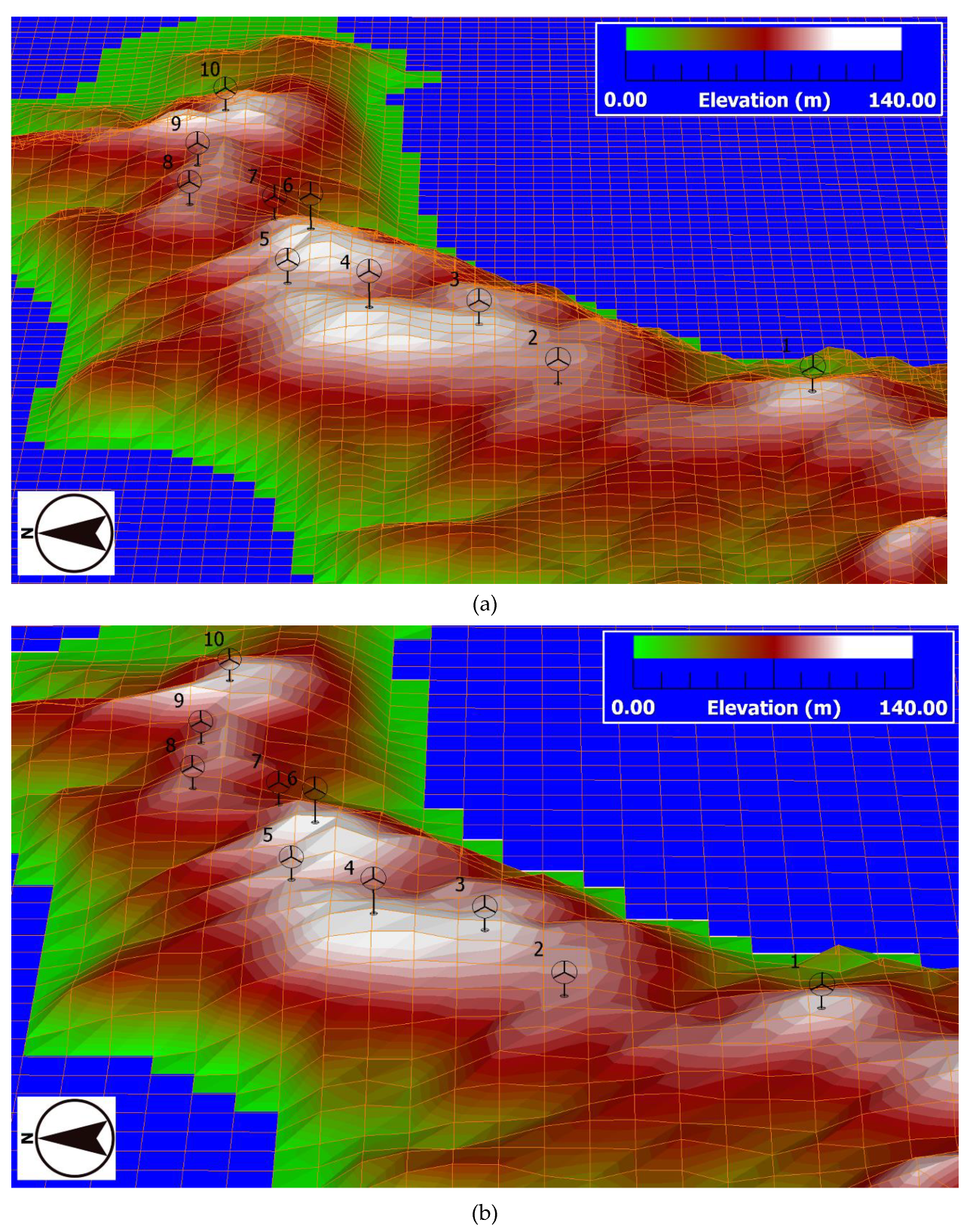
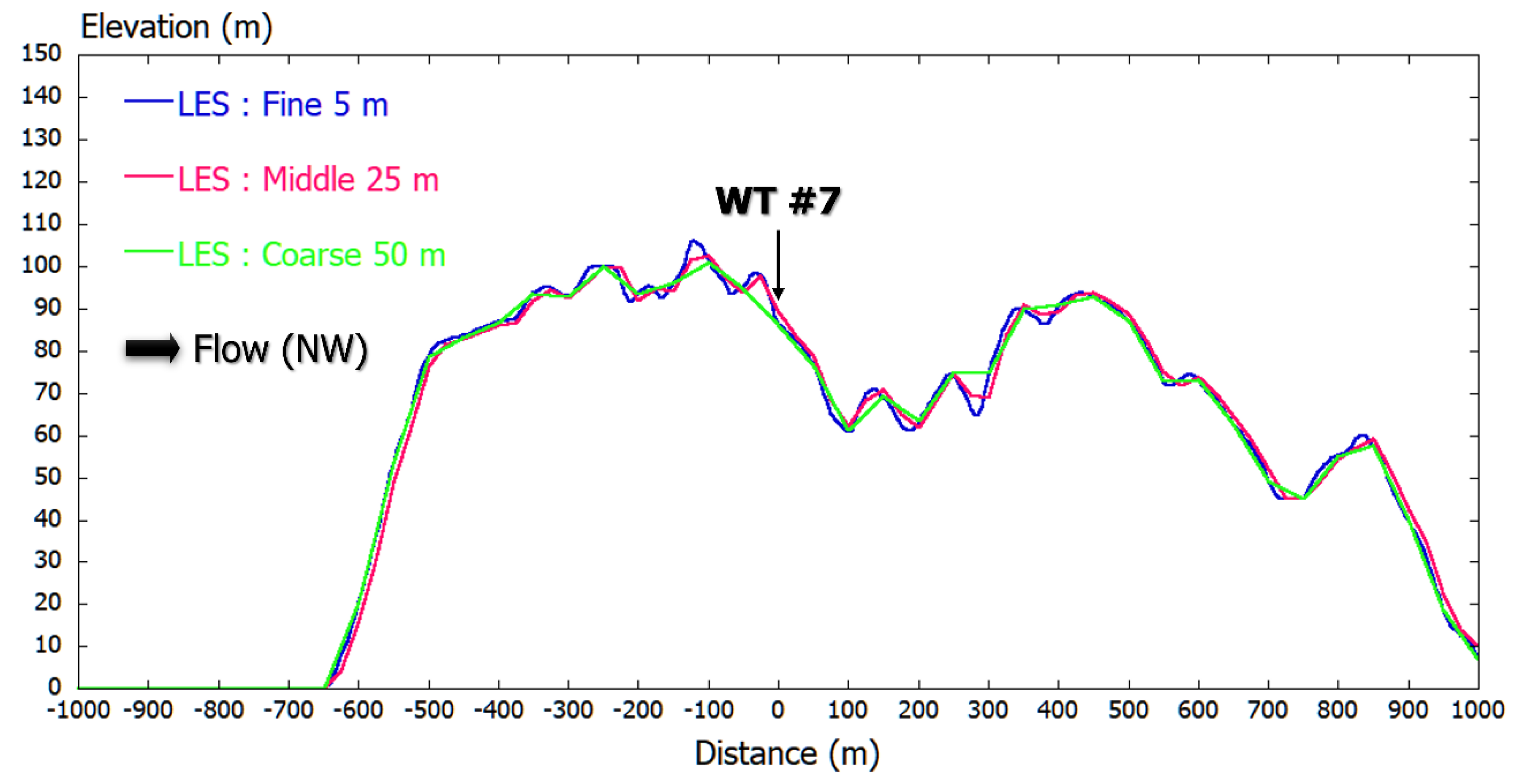
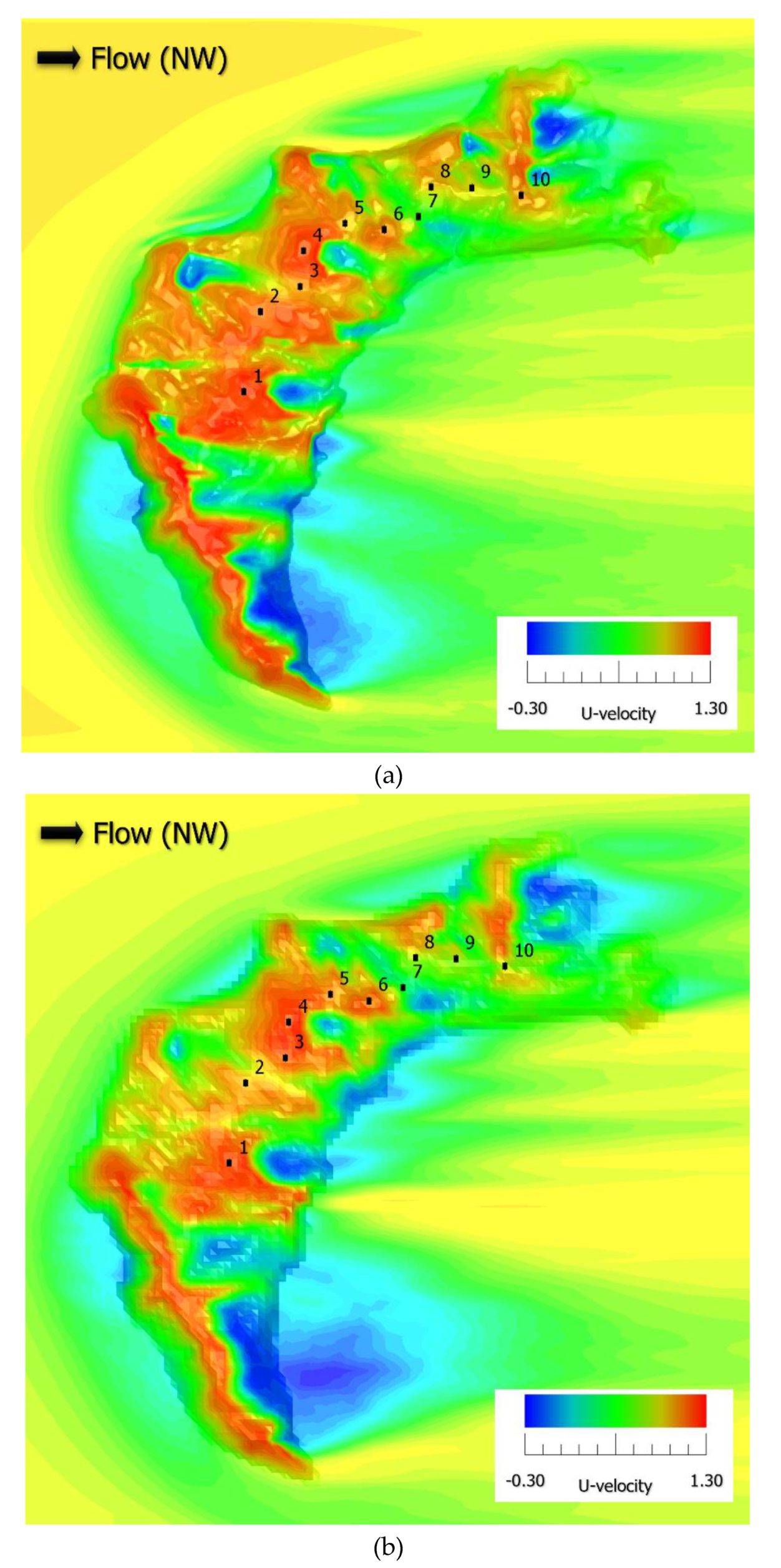
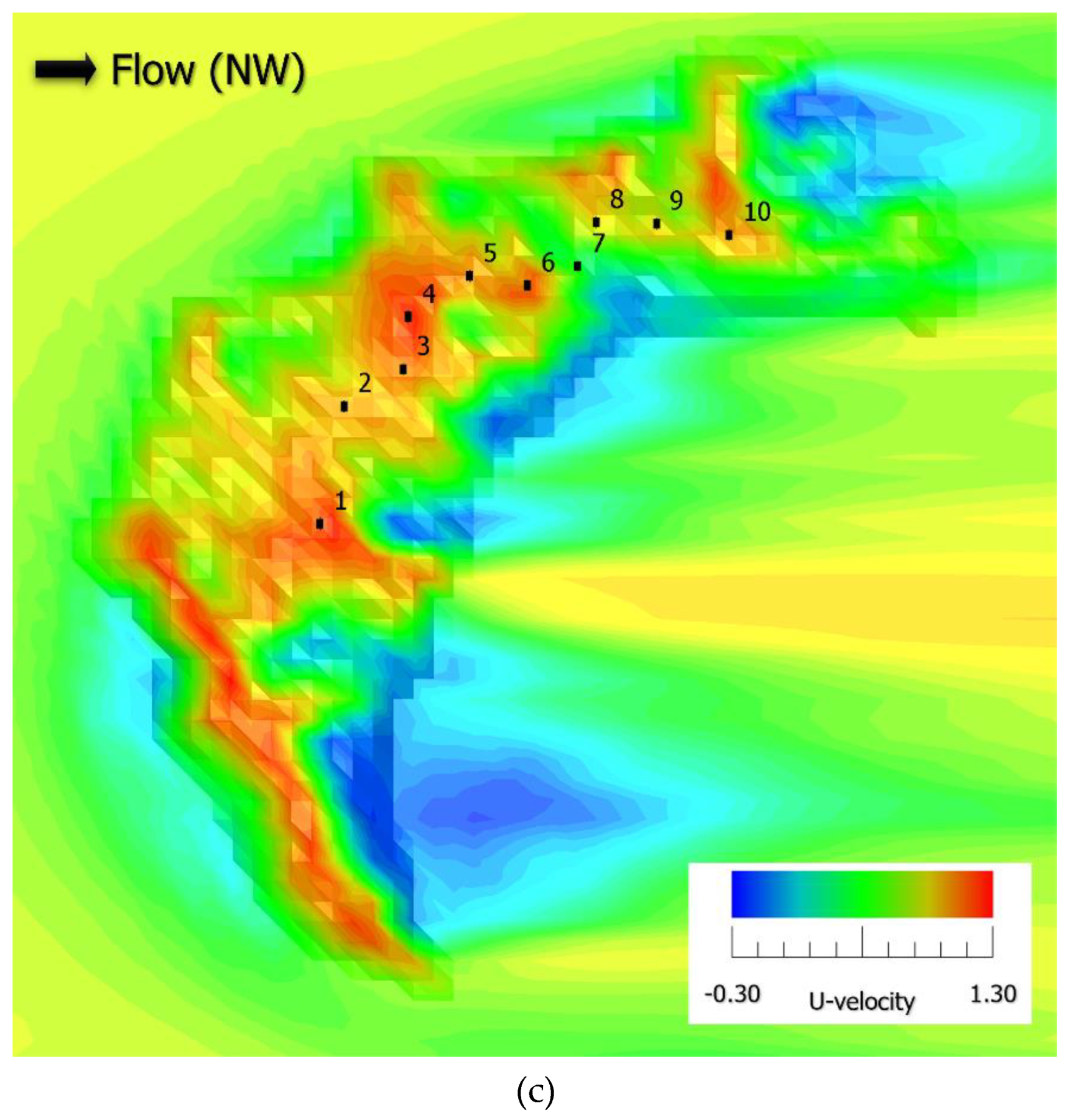
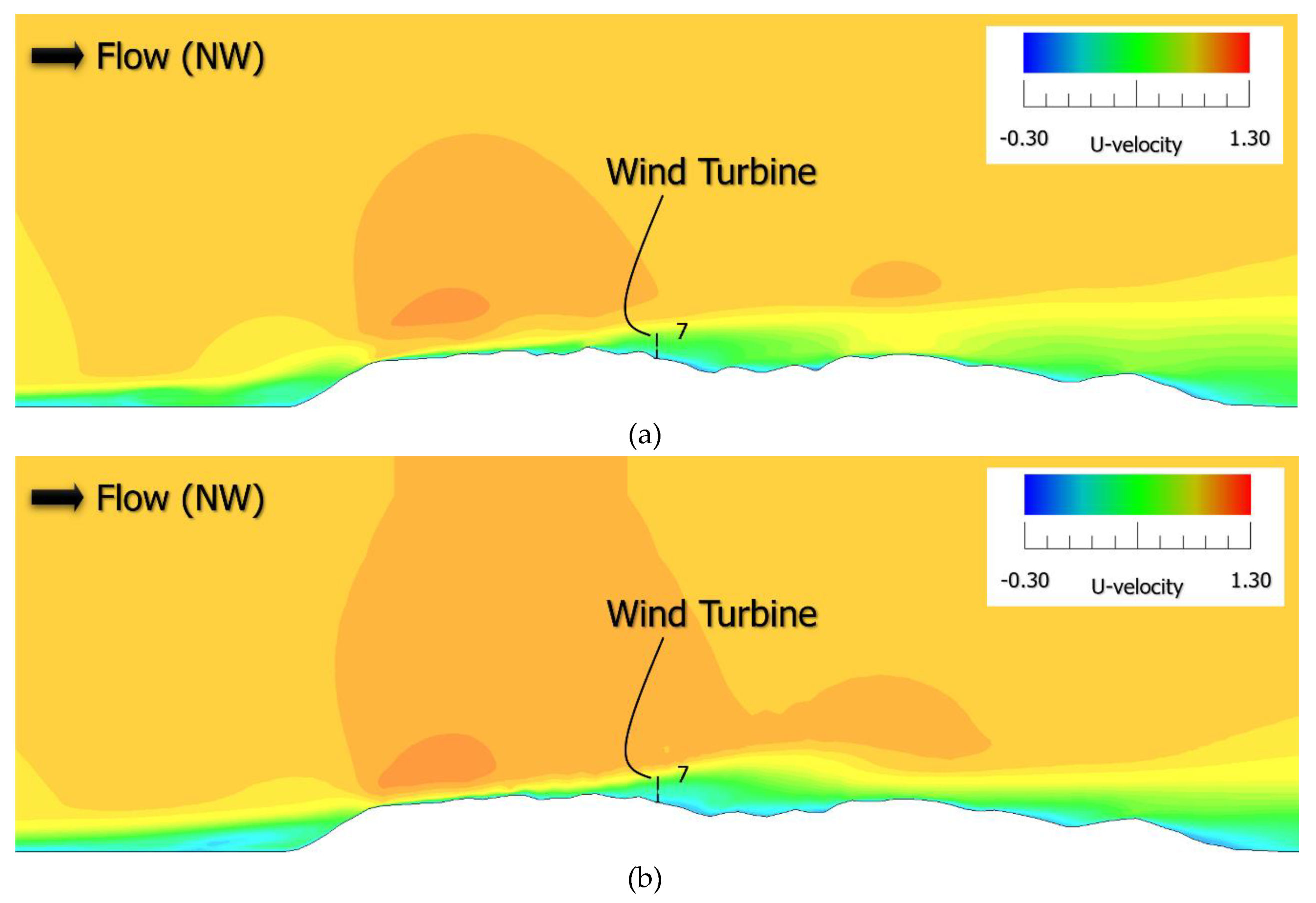
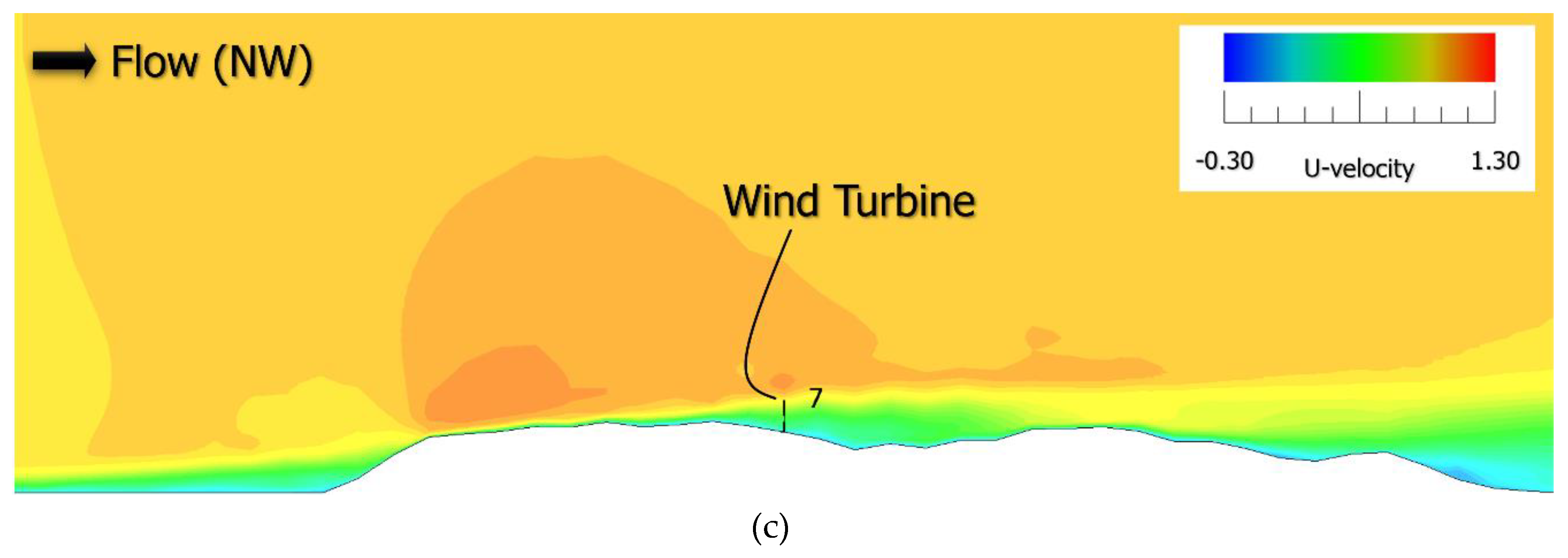
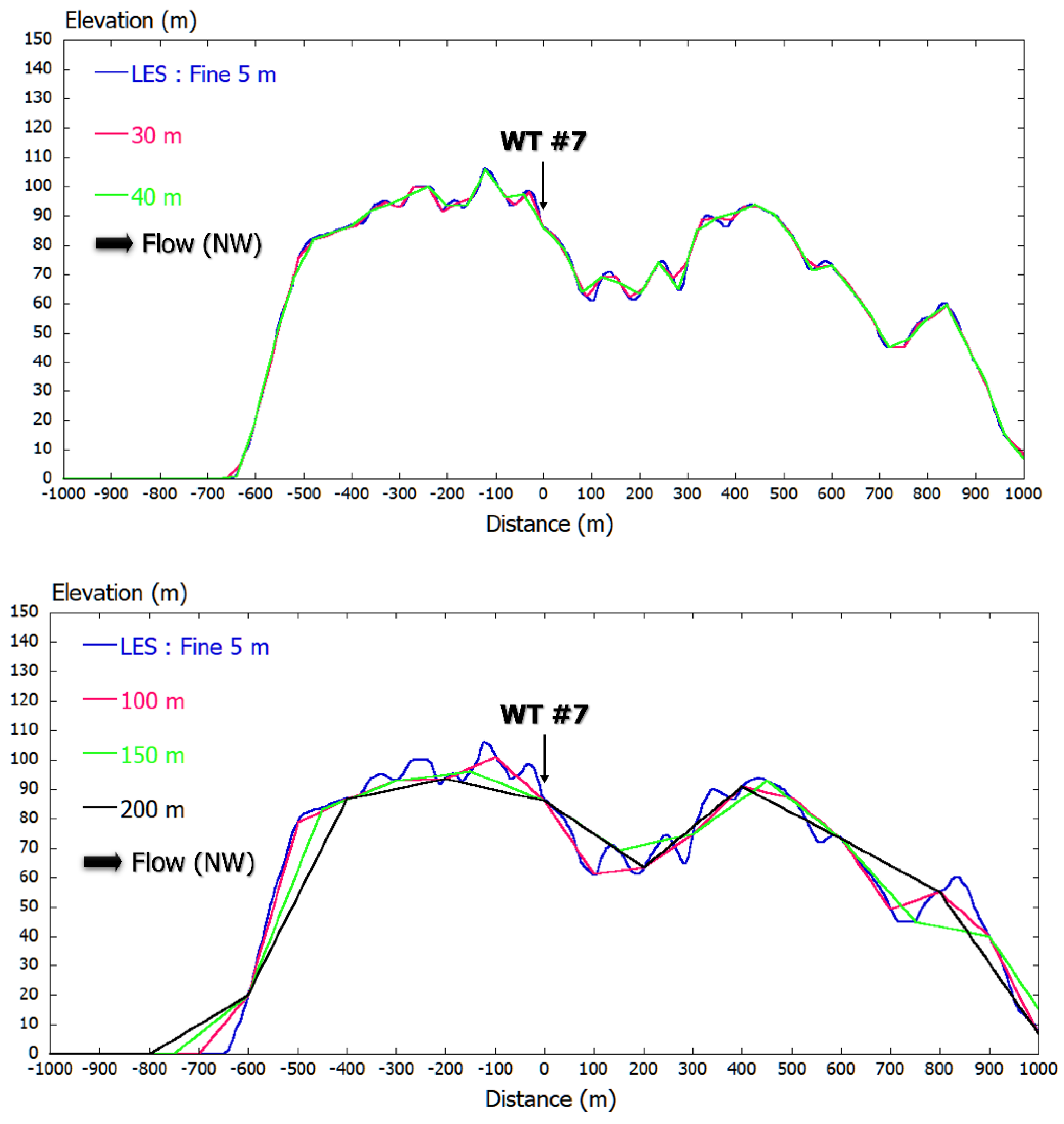
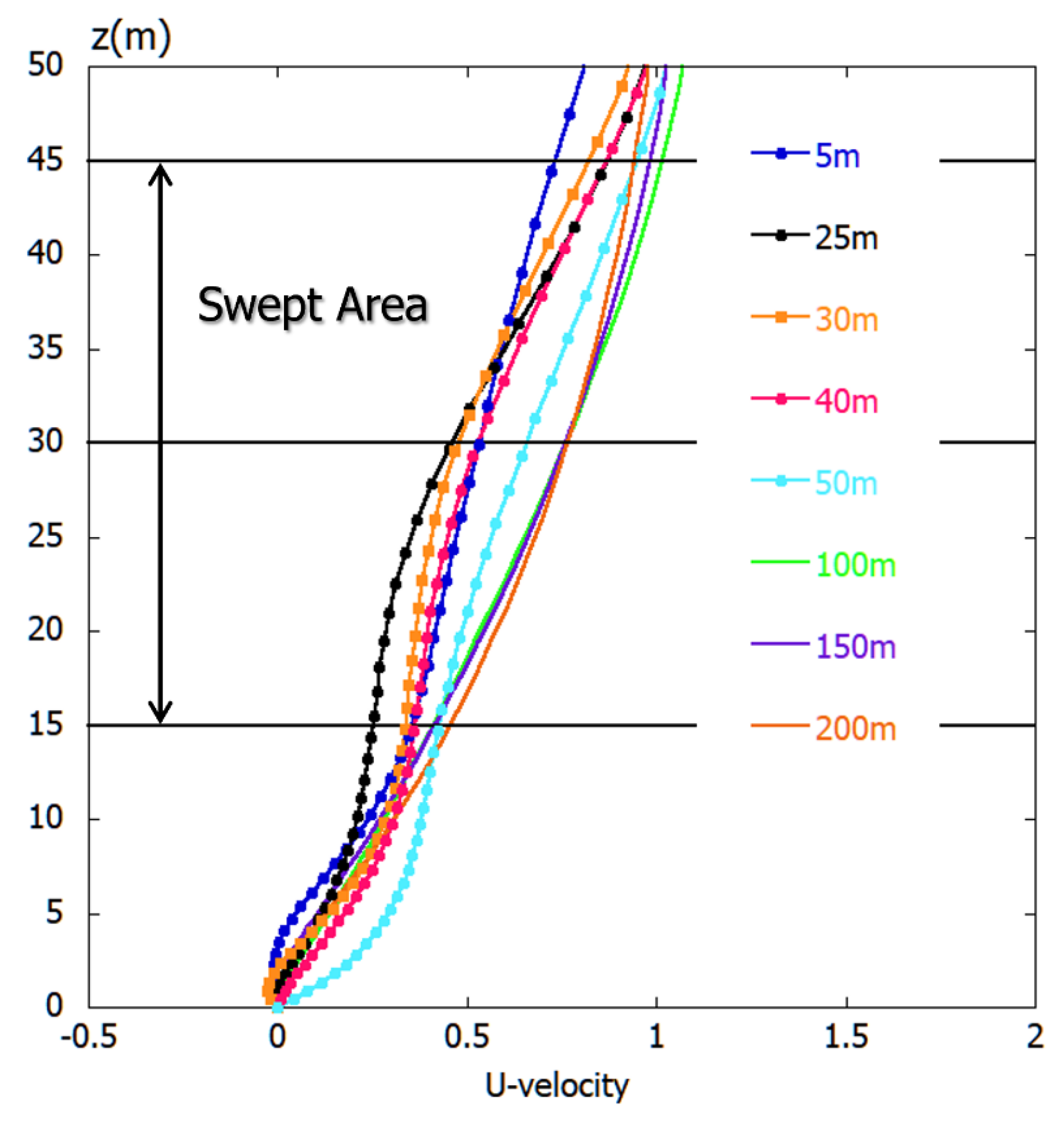
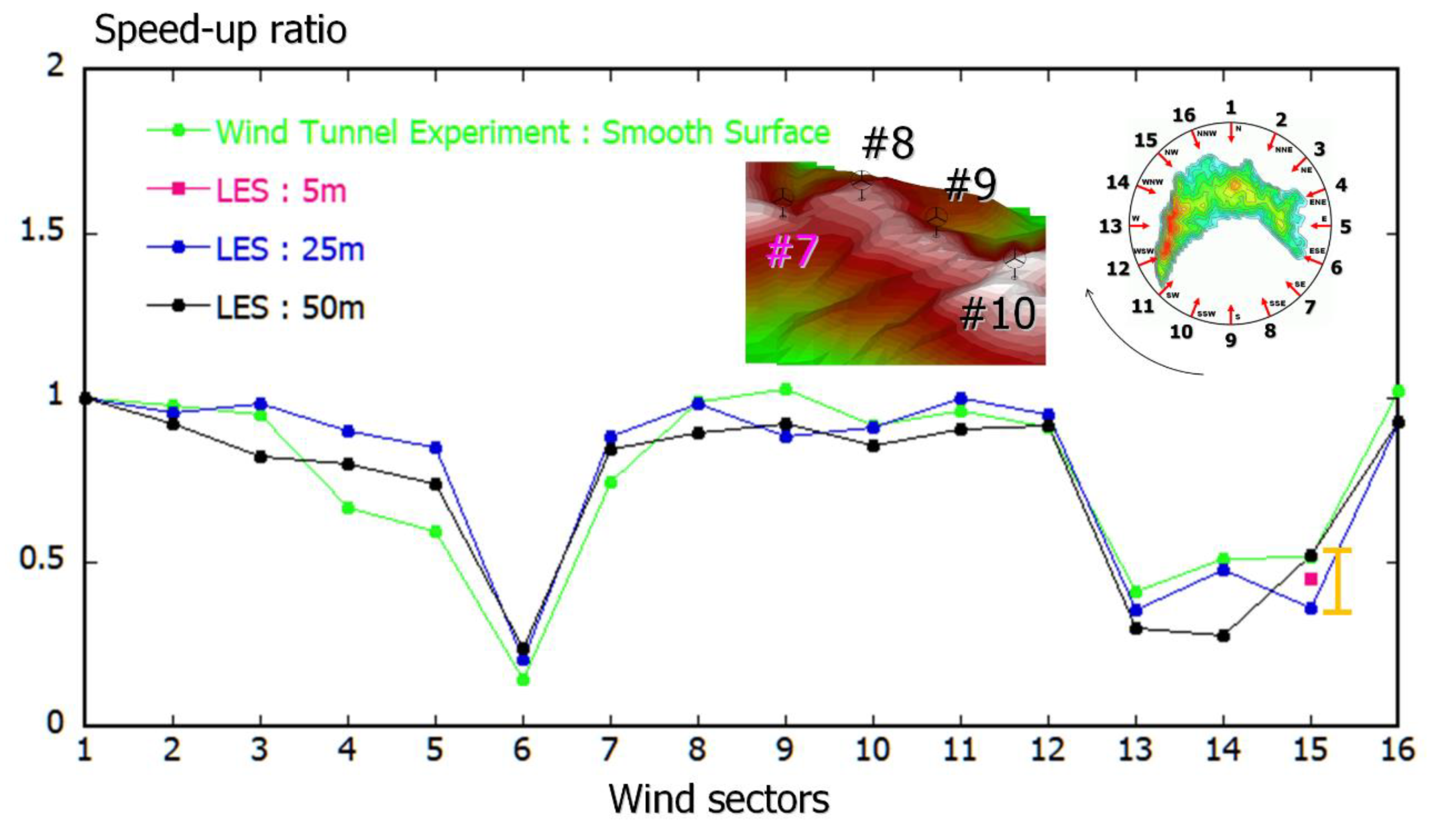
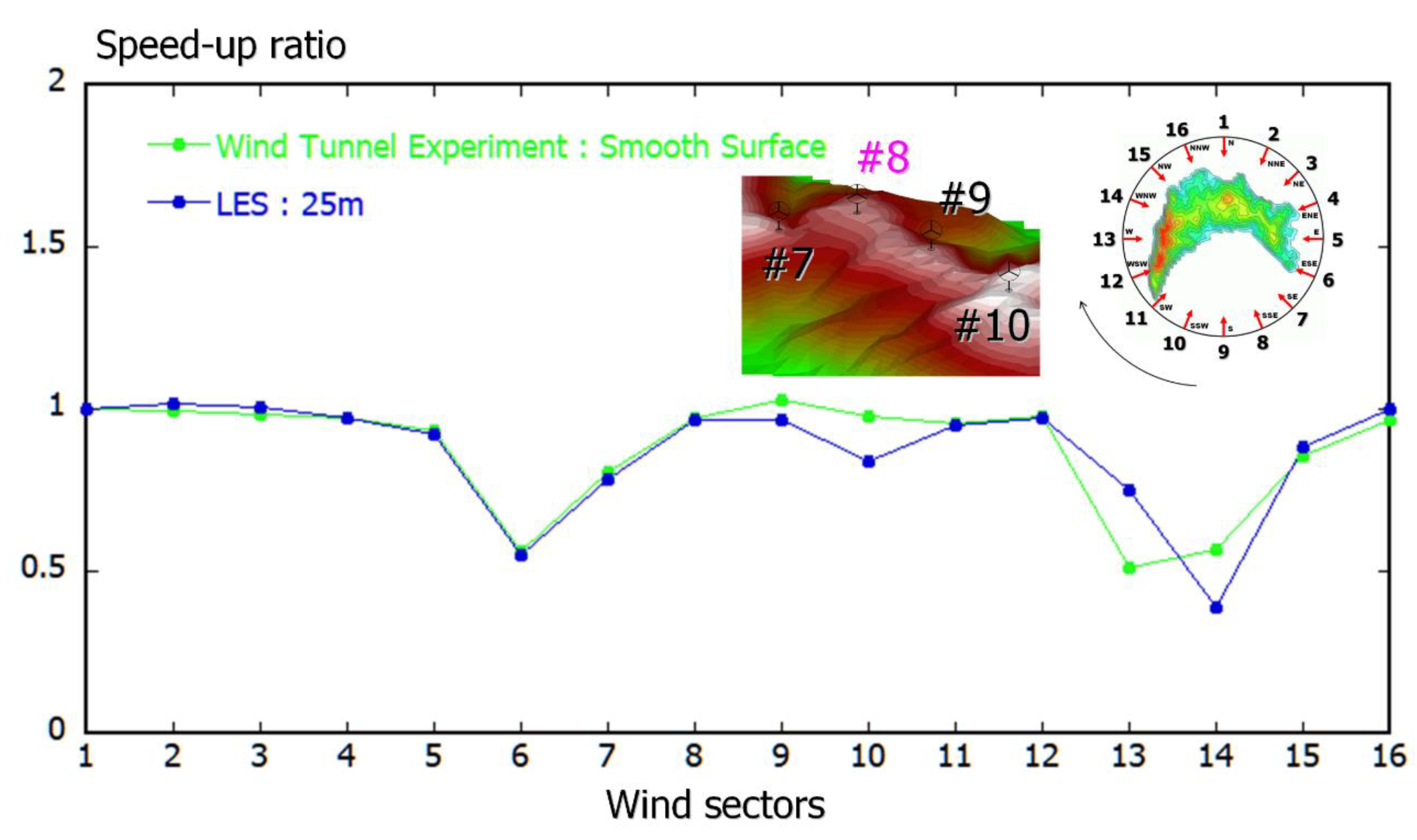
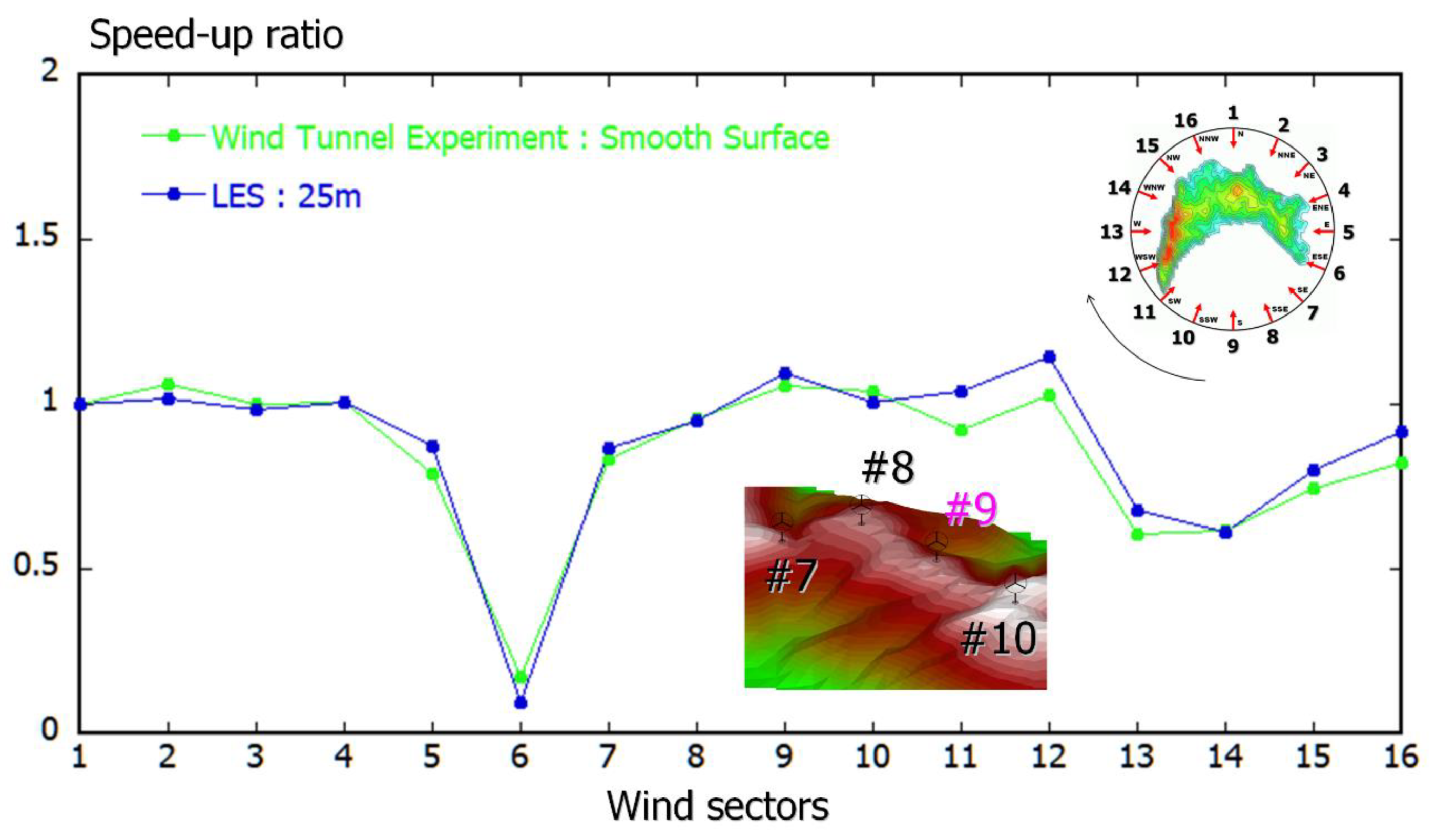

References
- Palma, J.M.L.M.; Castro, F.A.; Ribeiro, L.F.; Rodrigues, A.H.; Pinto, A.P. Linear and nonlinear models in wind resource assessment and wind turbine micro-siting in complex terrain. J. Wind Eng. Ind. Aerodyn. 2008, 96, 2308. [Google Scholar] [CrossRef]
- Sumner, J.; Watters, C.S.; Masson, C. CFD in Wind Energy: The Virtual, Multiscale Wind Tunnel. Energies 2010, 3, 989–1013. [Google Scholar] [CrossRef]
- Gopalan, H.; Gundling, C.; Brown, K.; Roget, B.; Sitaraman, J.; Mirocha, J.D.; Miller, W.O. A coupled mesoscale-microscale framework for wind resource estimation and farm aerodynamics. J. Wind Eng. Ind. Aerodyn. 2014, 132, 13. [Google Scholar] [CrossRef]
- Blocken, B.; Hout, A.V.D.; Dekker, J.; Weiler, O. CFD simulation of wind flow over natural complex terrain: Case study with validation by field measurements for Ria de Ferrol, Galicia, Spain. J. Wind Eng. Ind. Aerodyn. 2015, 147, 43. [Google Scholar] [CrossRef]
- Murthy, K.S.R.; Rahi, O.P. A comprehensive review of wind resource assessment. Renew. Sustain. Energy Rev. 2017, 72, 1320. [Google Scholar] [CrossRef]
- Dhunny, A.Z.; Lollchund, M.R.; Rughooputh, S.D.D.V. Wind energy evaluation for a highly complex terrain using Computational Fluid Dynamics (CFD). Renew. Energy 2017, 101, 1. [Google Scholar] [CrossRef]
- Temel, O.; Bricteux, L.; Beeck, J.V. Coupled WRF-OpenFOAM study of wind flow over complex terrain. J. Wind Eng. Ind. Aerodyn. 2018, 174, 152. [Google Scholar] [CrossRef]
- Sessarego, M.; Shen, W.Z.; Van der Laan, M.; Hansen, K.; Zhu, W.J. CFD Simulations of Flows in a Wind Farm in Complex Terrain and Comparisons to Measurements. Appl. Sci. 2018, 8, 788. [Google Scholar] [CrossRef]
- Hewitt, S.; Margetts, L.; Revell, A. Building a Digital Wind Farm. Arch. Comput. Methods Eng. 2018, 25, 879–899. [Google Scholar] [CrossRef]
- Tang, X.-Y.; Zhao, S.; Fan, B.; Peinke, J.; Stoevesandt, B. Micro-scale wind resource assessment in complex terrain based on CFD coupled measurement from multiple masts. Appl. Energy 2019, 238, 806. [Google Scholar] [CrossRef]
- El Bahlouli, A.; Rautenberg, A.; Schön, M.; zum Berge, K.; Bange, J.; Knaus, H. Comparison of CFD Simulation to UAS Measurements for Wind Flows in Complex Terrain: Application to the WINSENT Test Site. Energies 2019, 12, 1992. [Google Scholar] [CrossRef]
- Porté-Agel, F.; Bastankhah, M.; Shamsoddin, S. Wind-Turbine and Wind-Farm Flows: A Review. Bound. Layer Meteorol. 2020, 174, 1–59. [Google Scholar] [CrossRef]
- Uchida, T. Computational Fluid Dynamics (CFD) Investigation of Wind Turbine Nacelle Separation Accident over Complex Terrain in Japan. Energies 2018, 11, 1485. [Google Scholar] [CrossRef]
- Uchida, T. LES Investigation of Terrain-Induced Turbulence in Complex Terrain and Economic Effects of Wind Turbine Control. Energies 2018, 11, 1530. [Google Scholar] [CrossRef]
- Uchida, T. Computational Fluid Dynamics Approach to Predict the Actual Wind Speed over Complex Terrain. Energies 2018, 11, 1694. [Google Scholar] [CrossRef]
- Uchida, T.; Takakuwa, S. A Large-Eddy Simulation-Based Assessment of the Risk of Wind Turbine Failures Due to Terrain-Induced Turbulence over a Wind Farm in Complex Terrain. Energies 2019, 12, 1925. [Google Scholar] [CrossRef]
- Uchida, T.; Kawashima, Y. New Assessment Scales for Evaluating the Degree of Risk of Wind Turbine Blade Damage Caused by Terrain-Induced Turbulence. Energies 2019, 12, 2624. [Google Scholar] [CrossRef]
- Uchida, T.; Ohya, Y. Micro-siting Technique for Wind Turbine Generators by Using Large-Eddy Simulation. J. Wind Eng. Ind. Aerodyn. 2008, 96, 2121. [Google Scholar] [CrossRef]
- Kim, J.; Moin, P. Application of a fractional-step method to incompressible Navier-Stokes equations. J. Comput. Phys. 1985, 59, 308. [Google Scholar] [CrossRef]
- Smagorinsky, J. General circulation experiments with the primitive equations: I. Basic experiments. Mon. Weather Rev. 1963, 91, 99. [Google Scholar] [CrossRef]
- Kajishima, T. Upstream-shifted interpolation method for numerical simulation of incompressible flows. Bull. Jpn. Soc. Mech. Eng. B 1994, 60–578, 3319–3326. (In Japanese) [Google Scholar] [CrossRef]
- Kawamura, T.; Takami, H.; Kuwahara, K. Computation of high Reynolds number flow around a circular cylinder with surface roughness. Fluid Dyn. Res. 1986, 1, 145–162. [Google Scholar] [CrossRef]
- Uchida, T. Numerical Investigation of Terrain-Induced Turbulence in Complex Terrain Using High-Resolution Elevation Data and Surface Roughness Data Constructed with a Drone. Energies 2019, 12, 3766. [Google Scholar] [CrossRef]
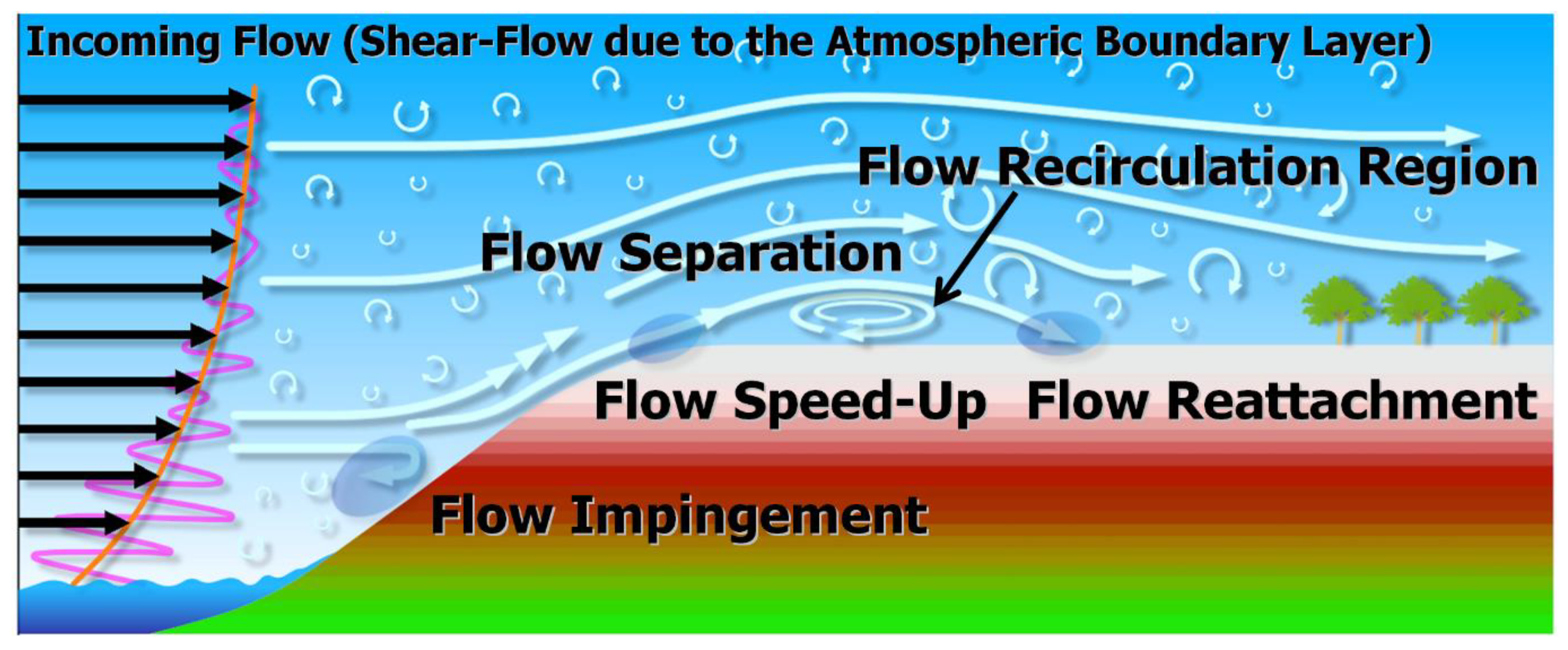
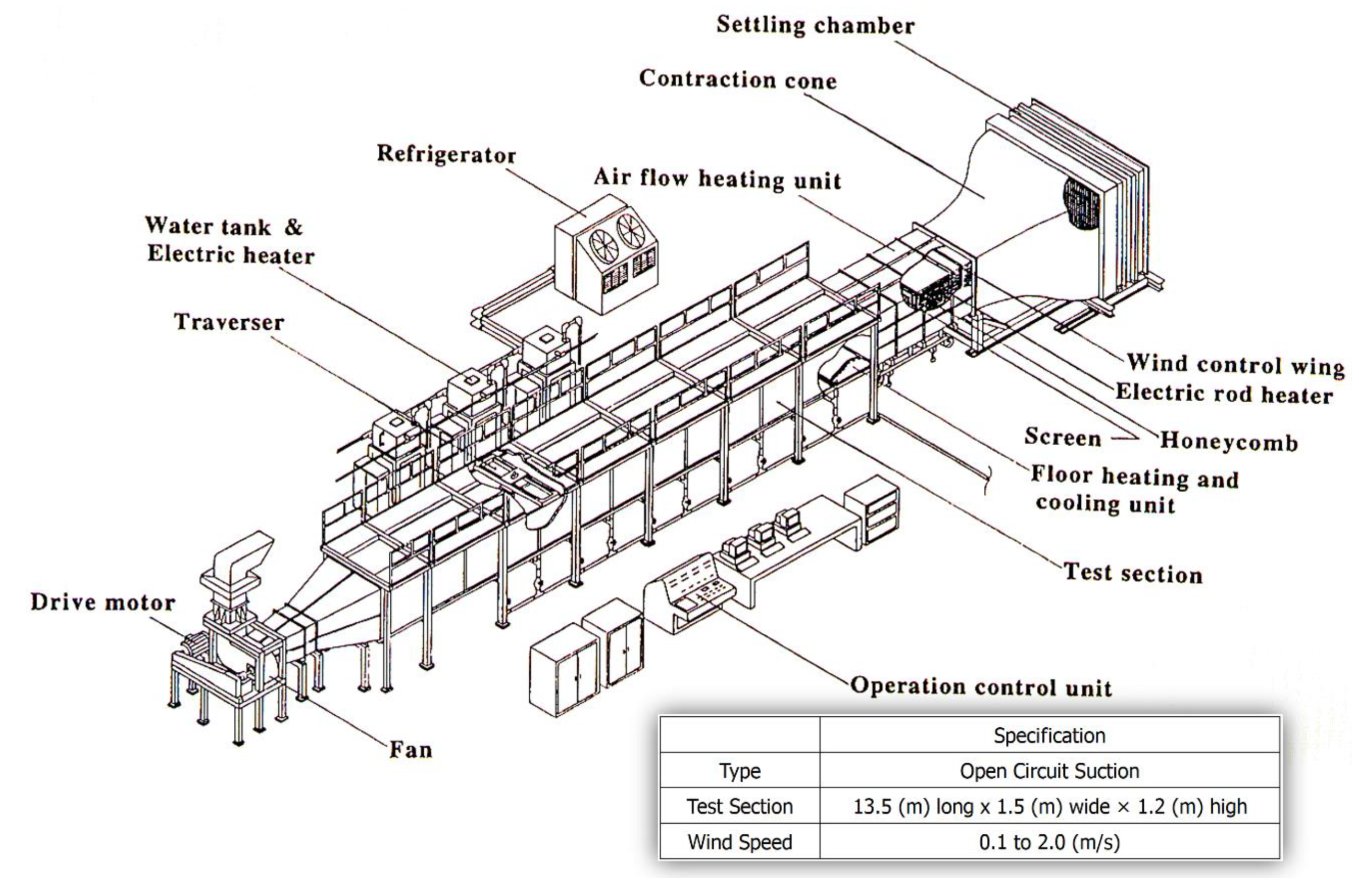
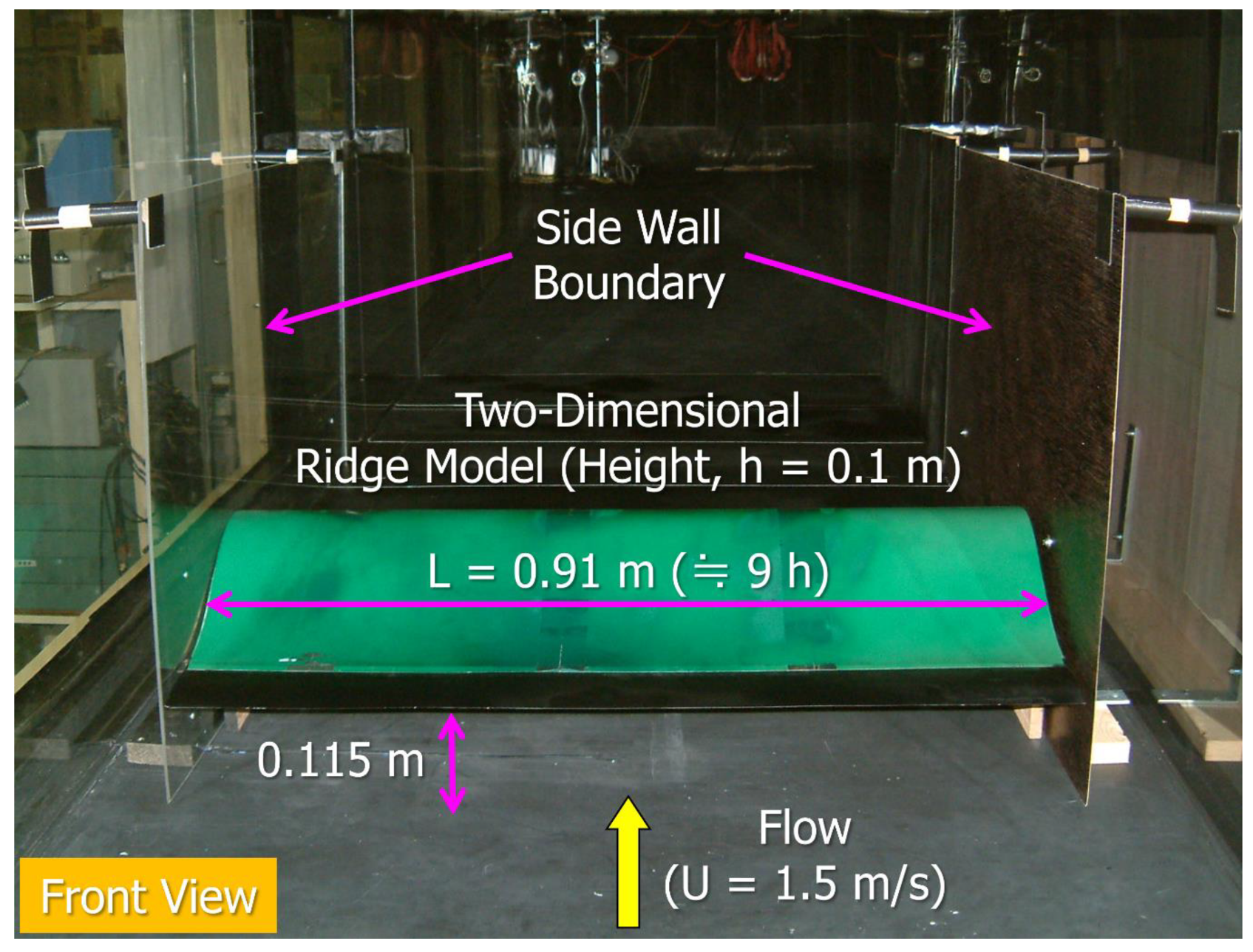
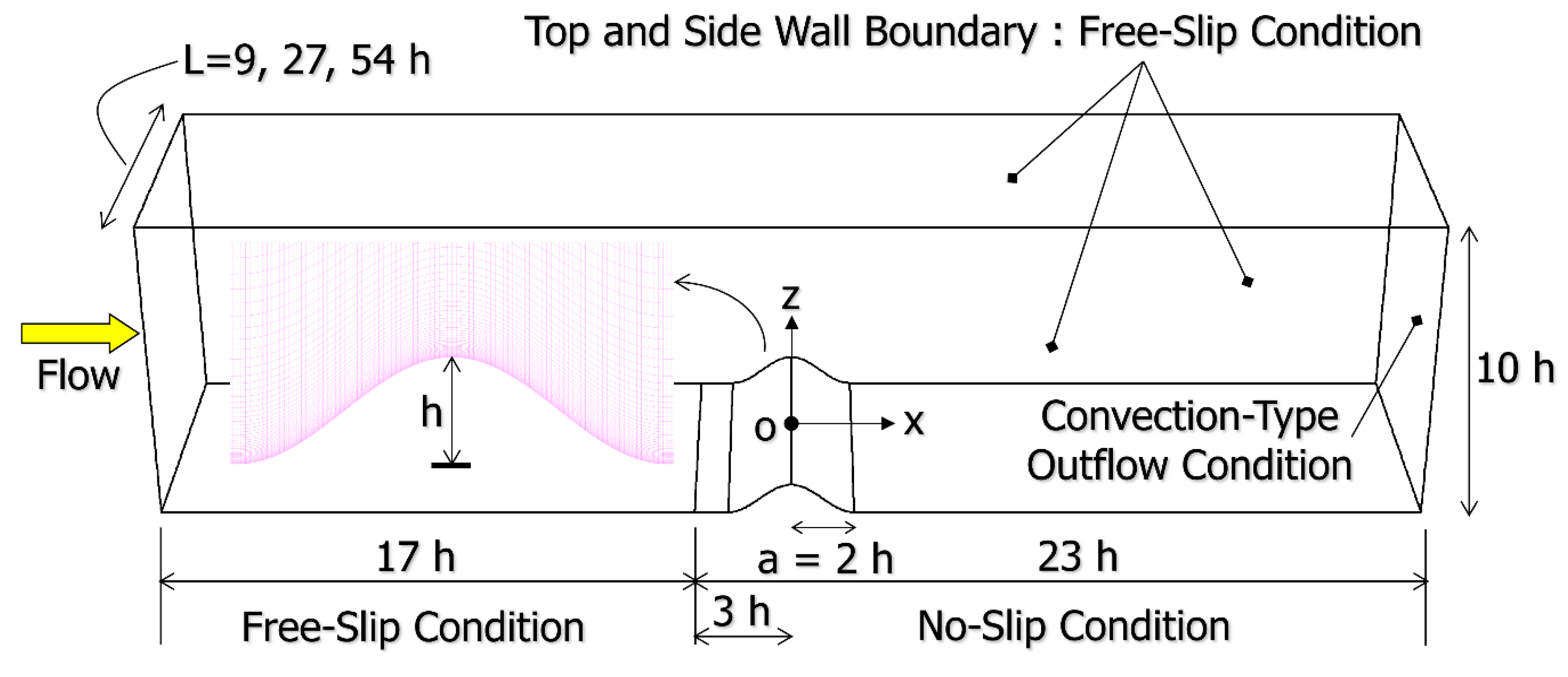


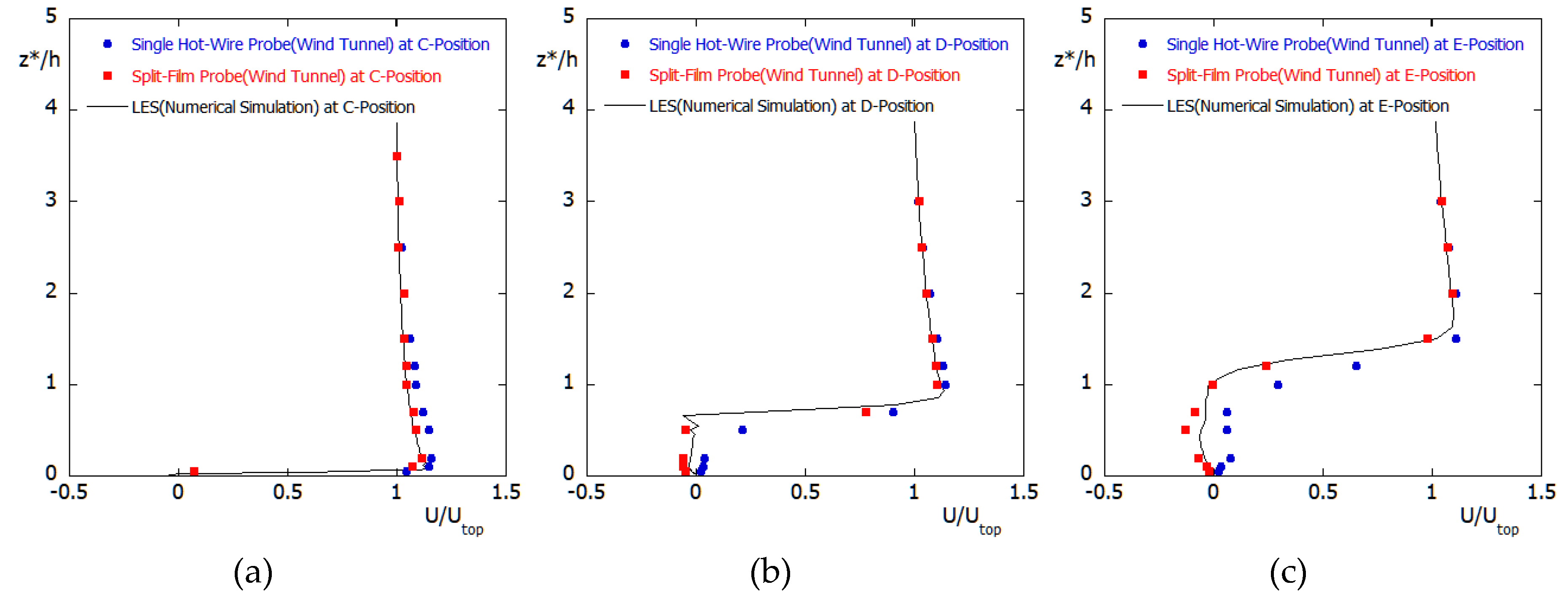

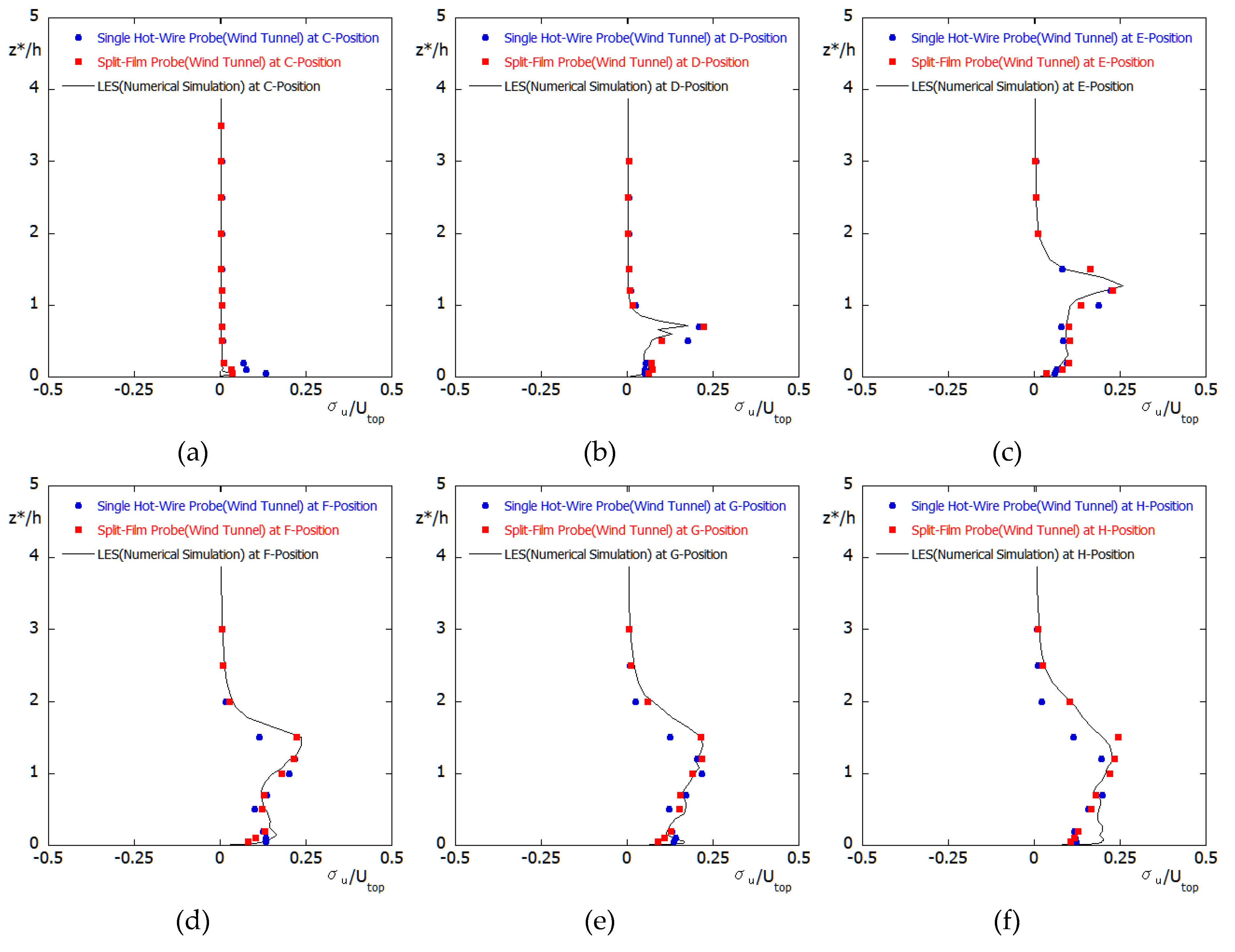
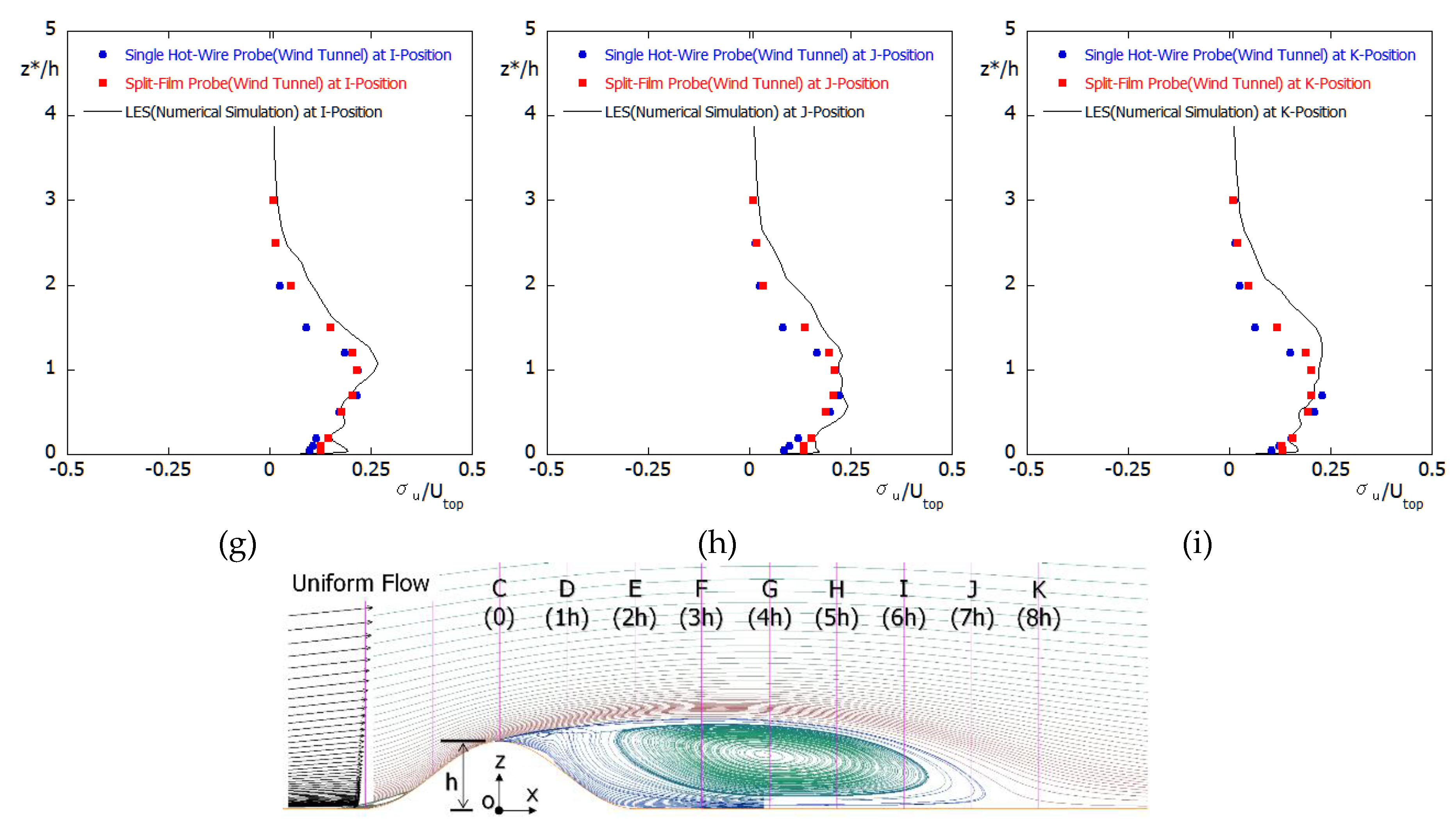
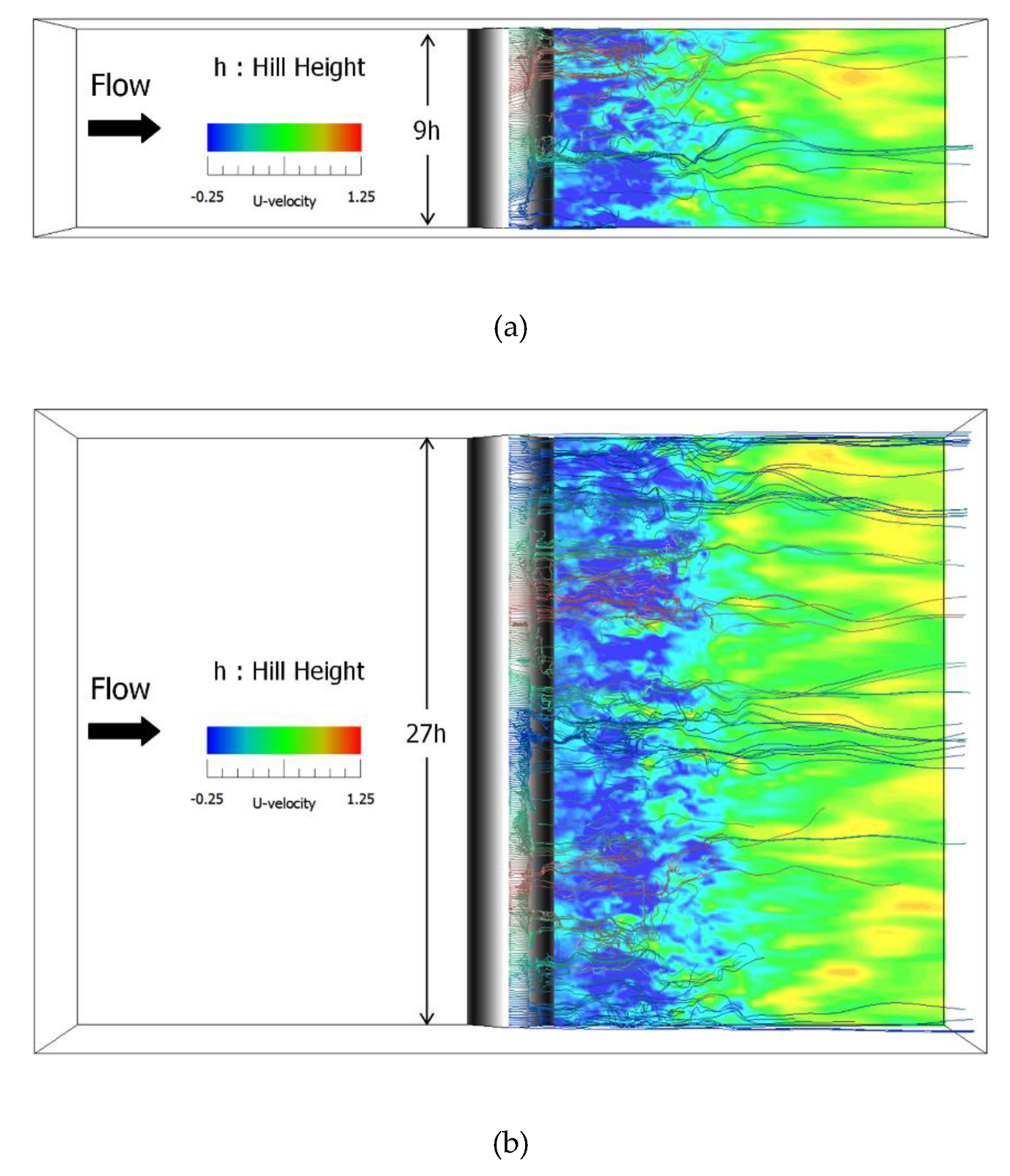
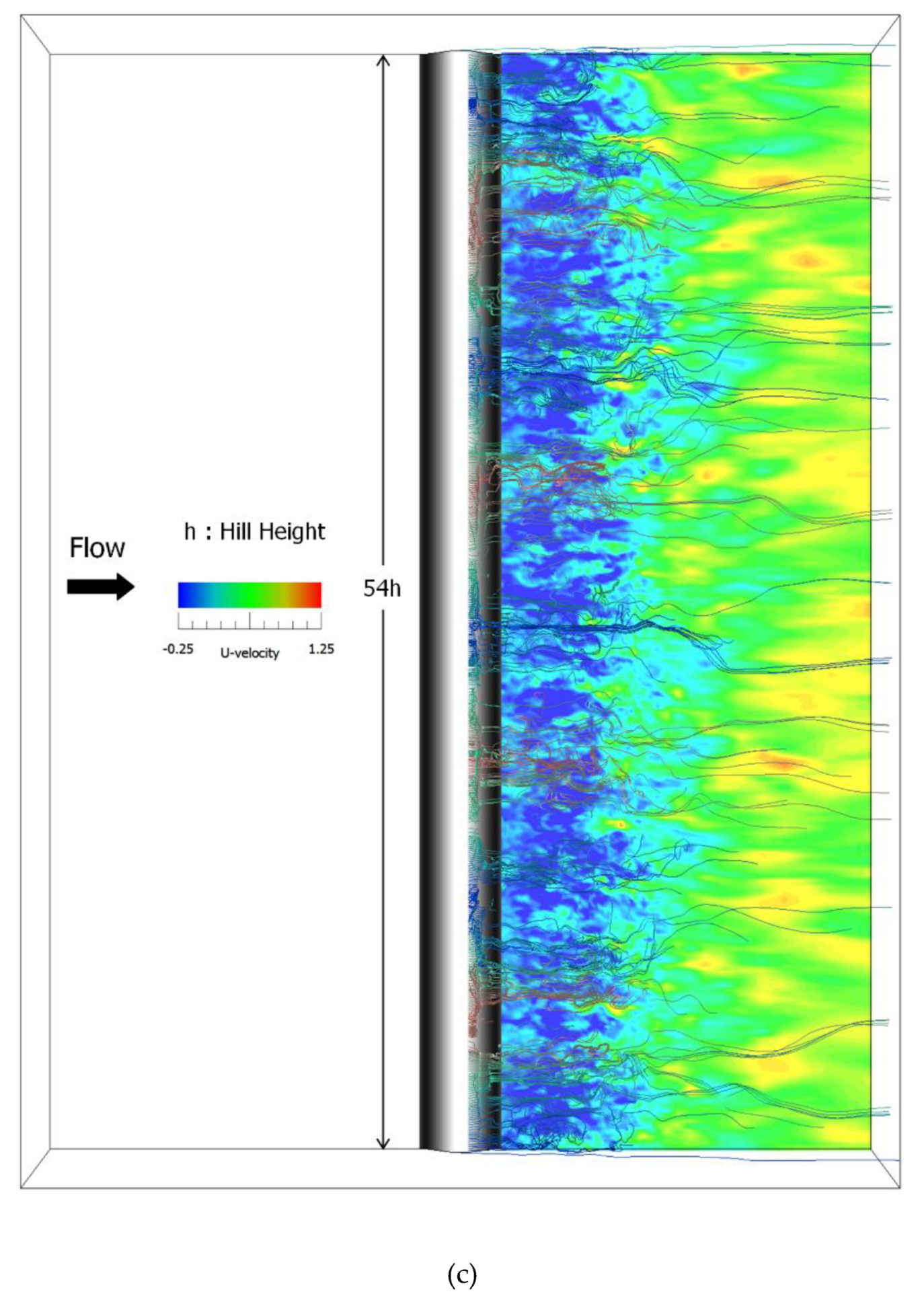
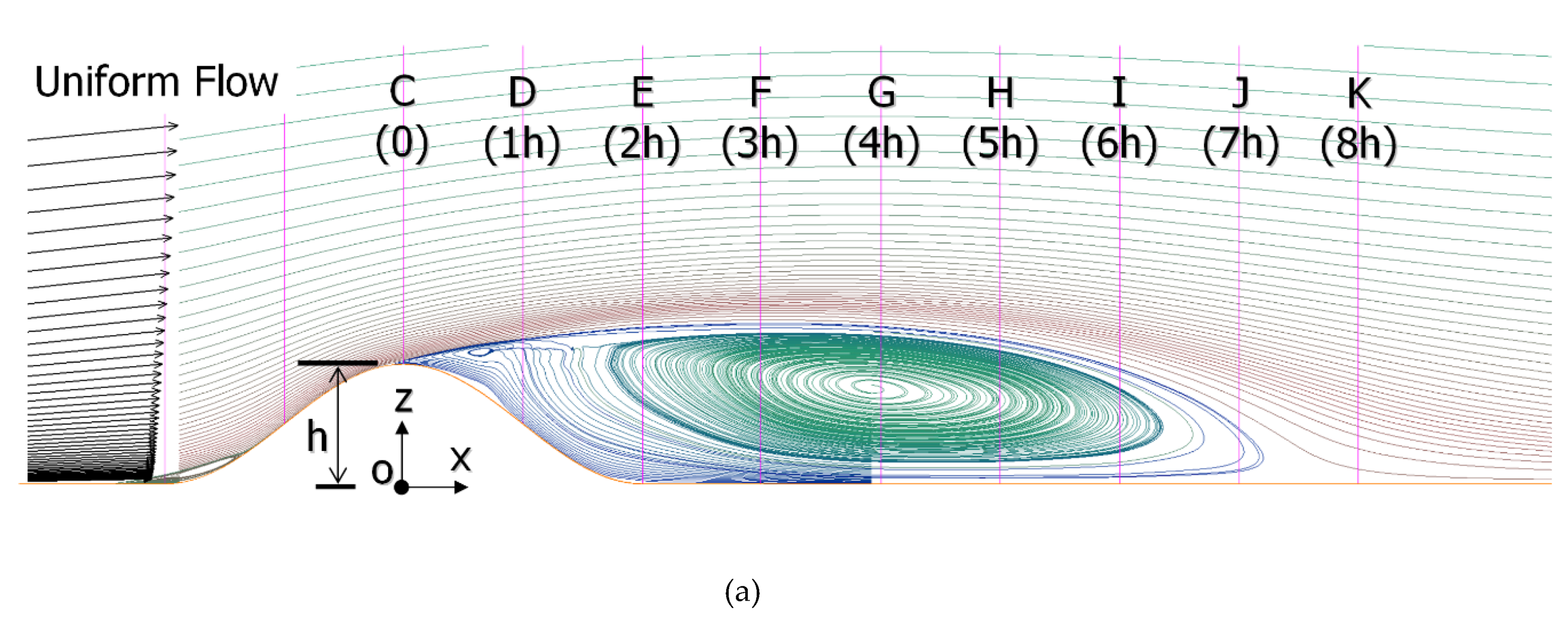
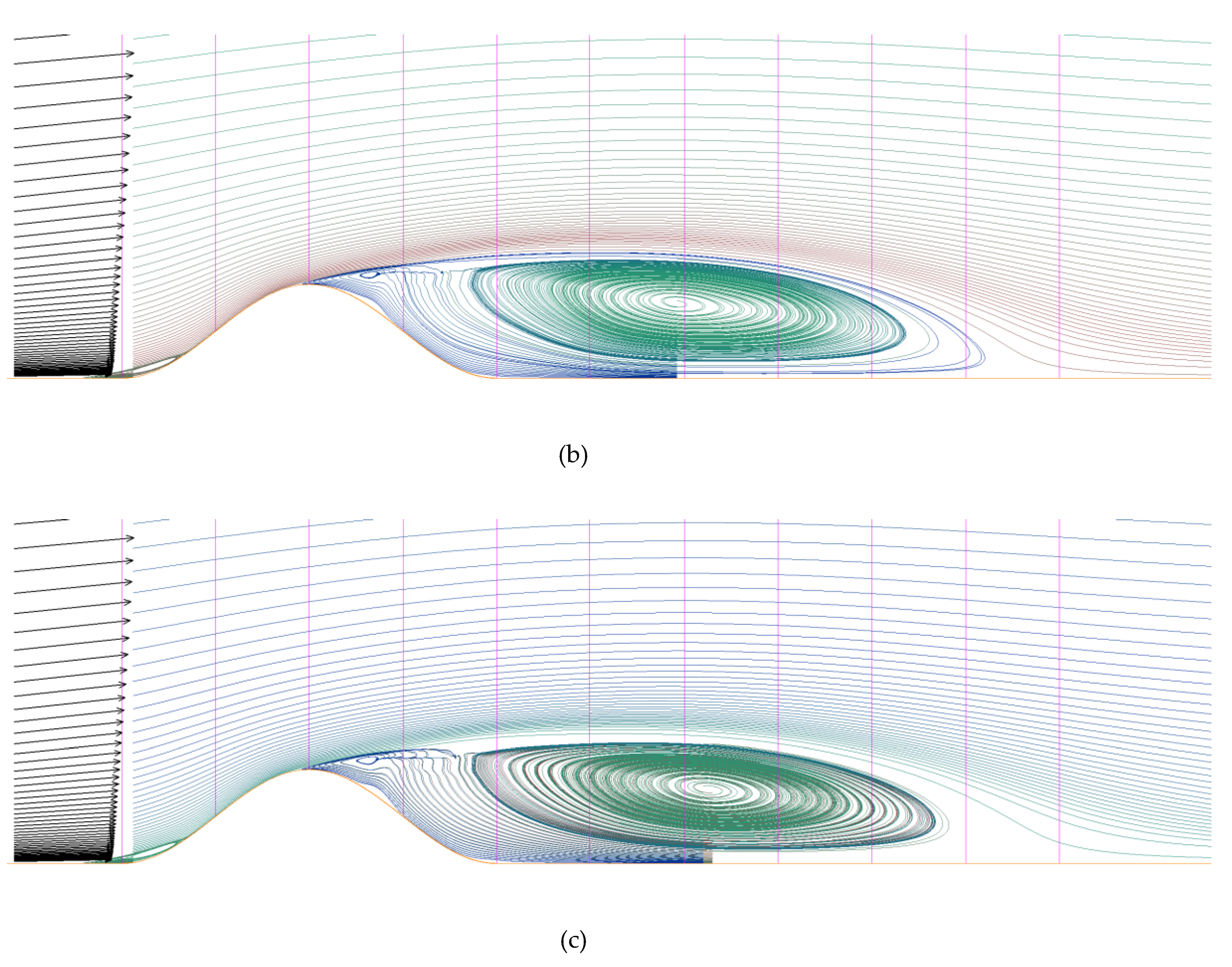
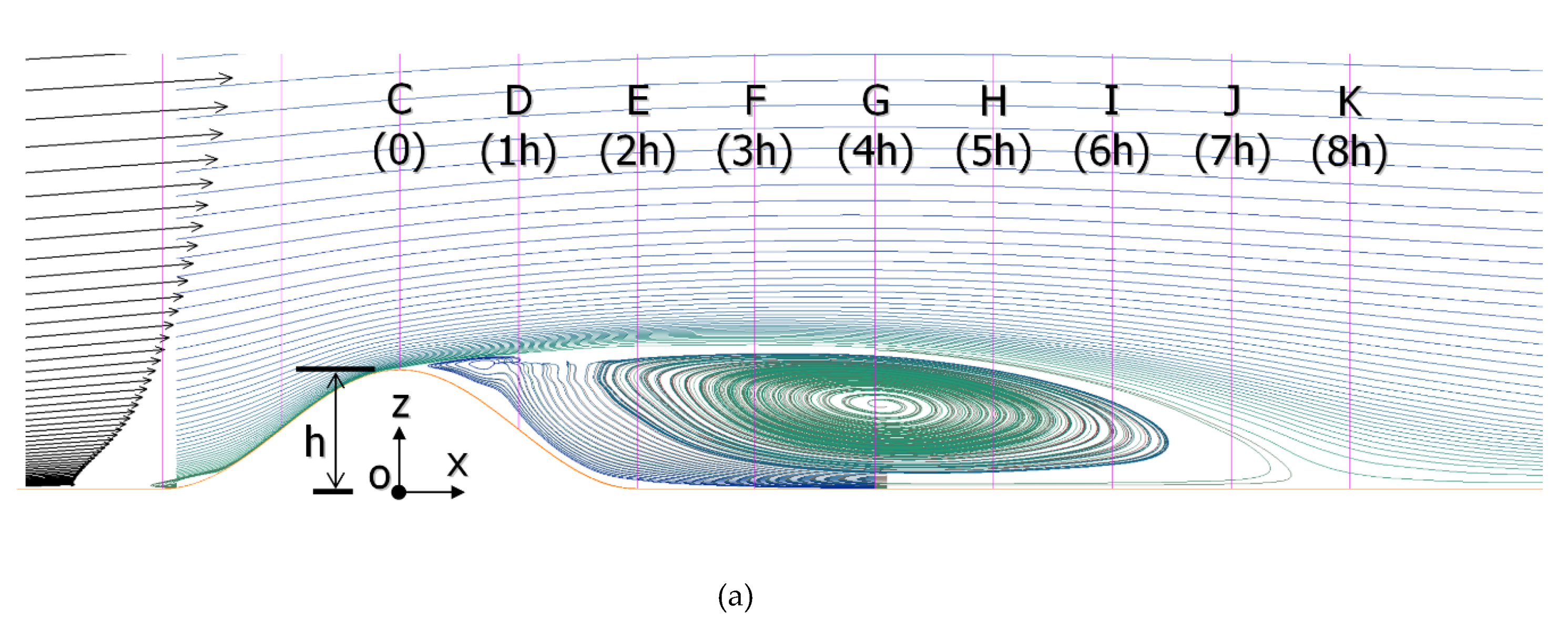
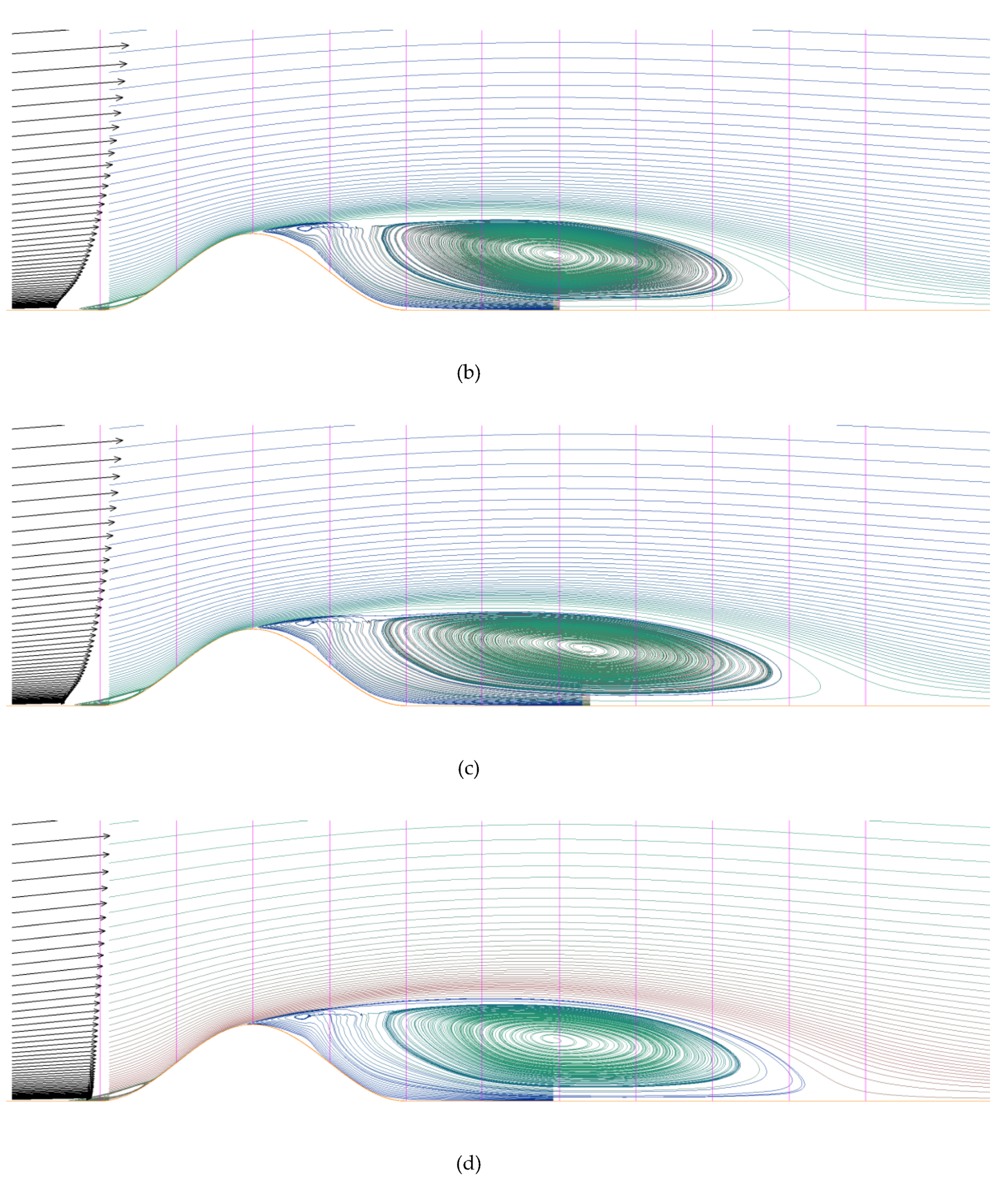
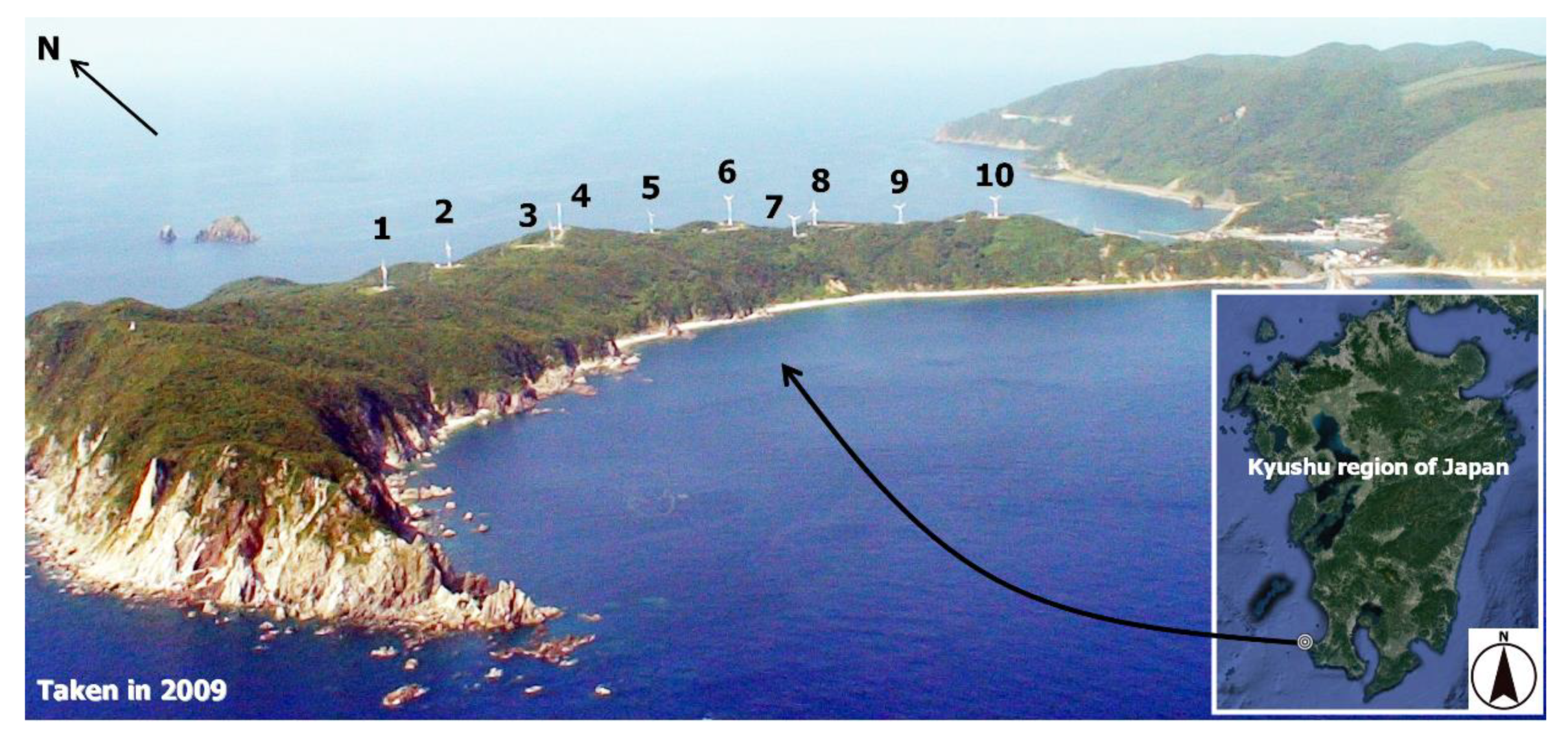
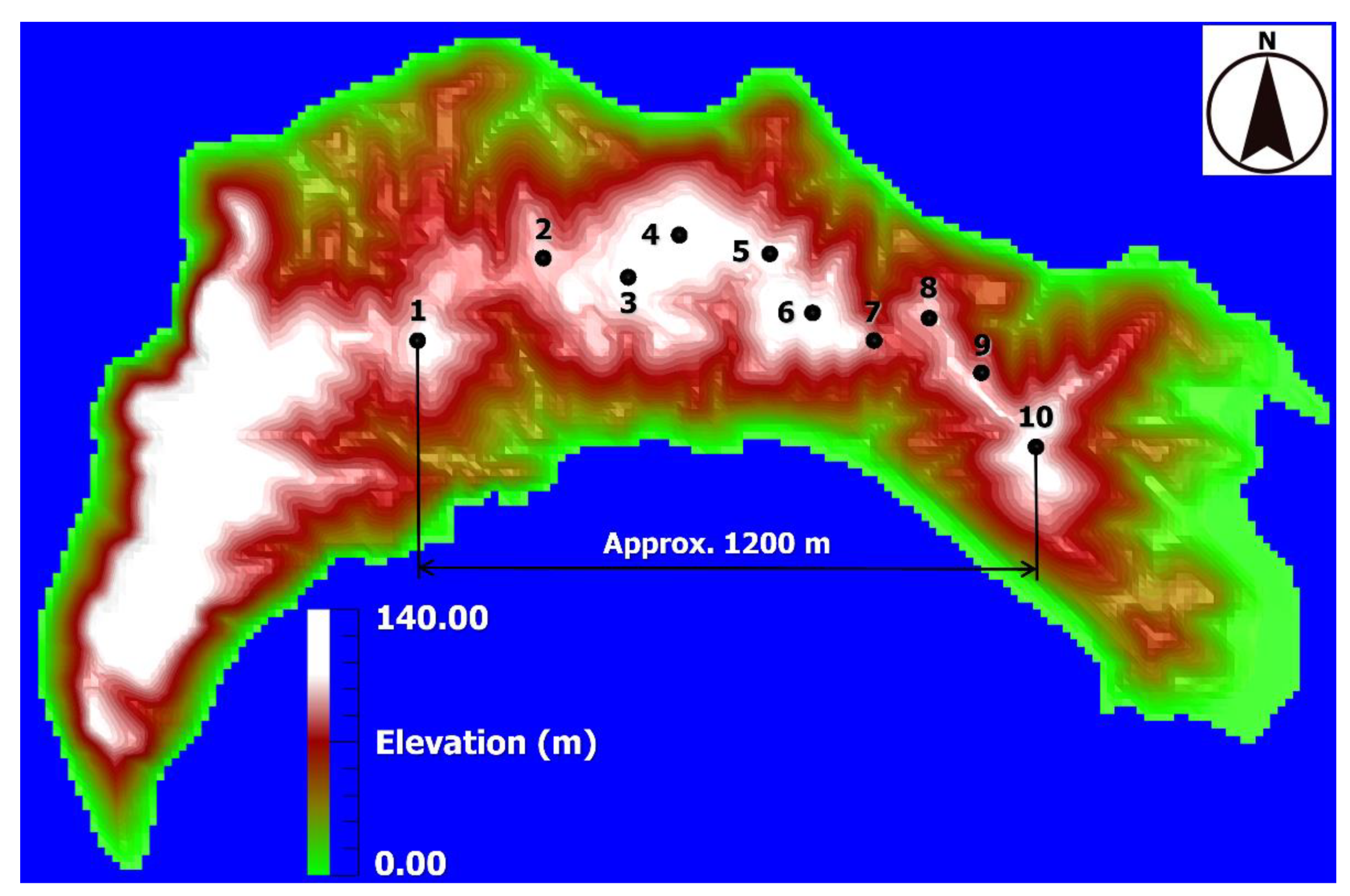
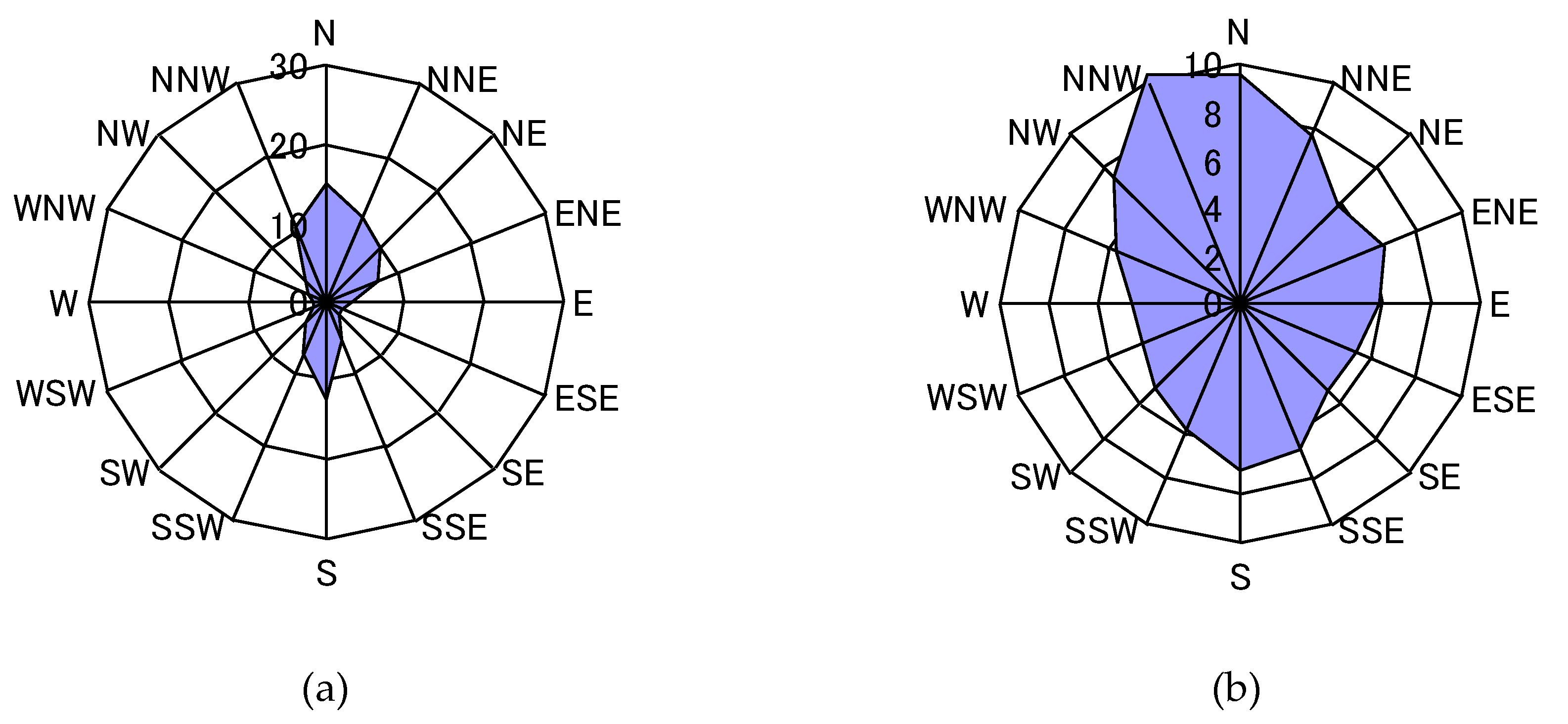
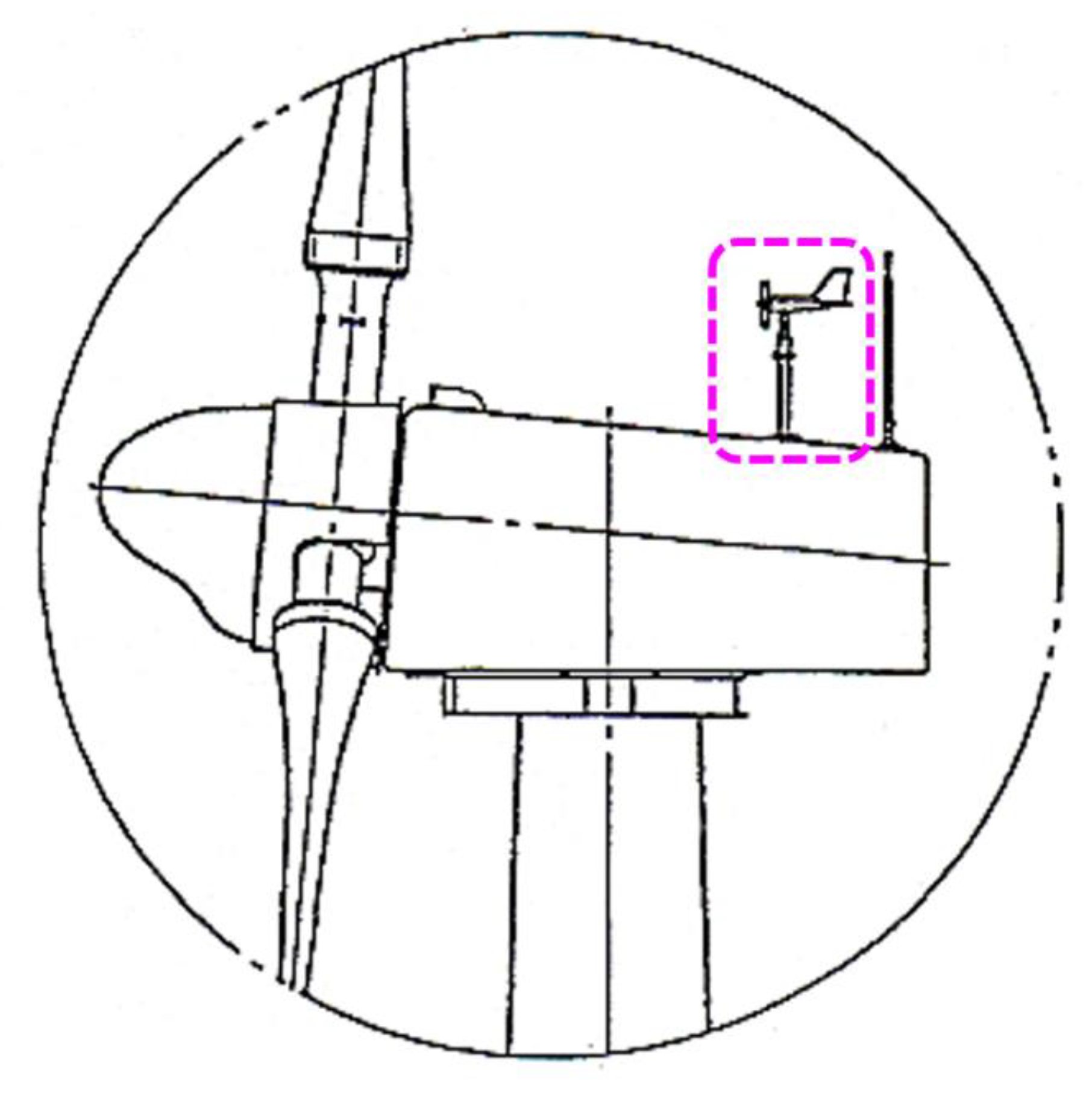
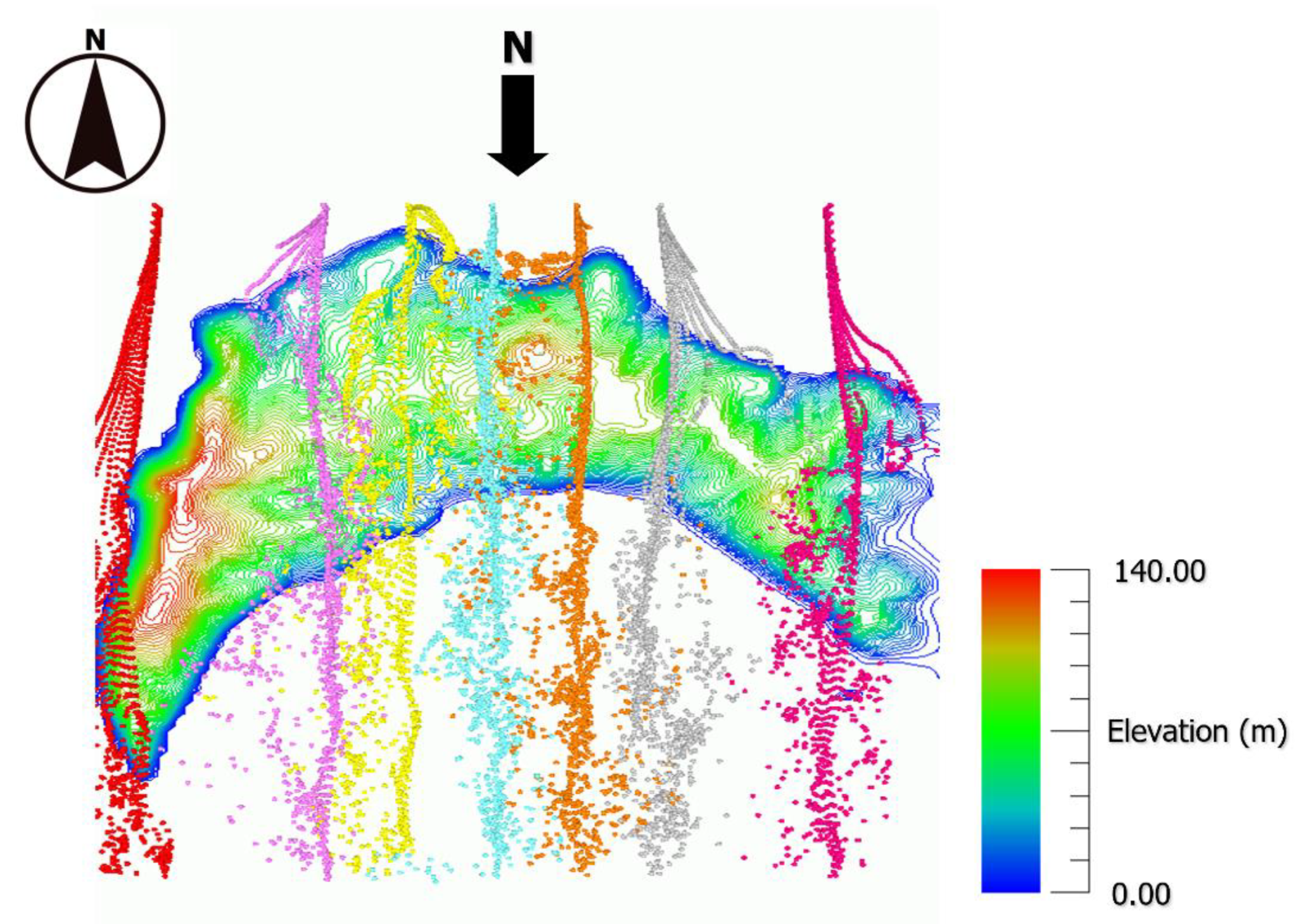
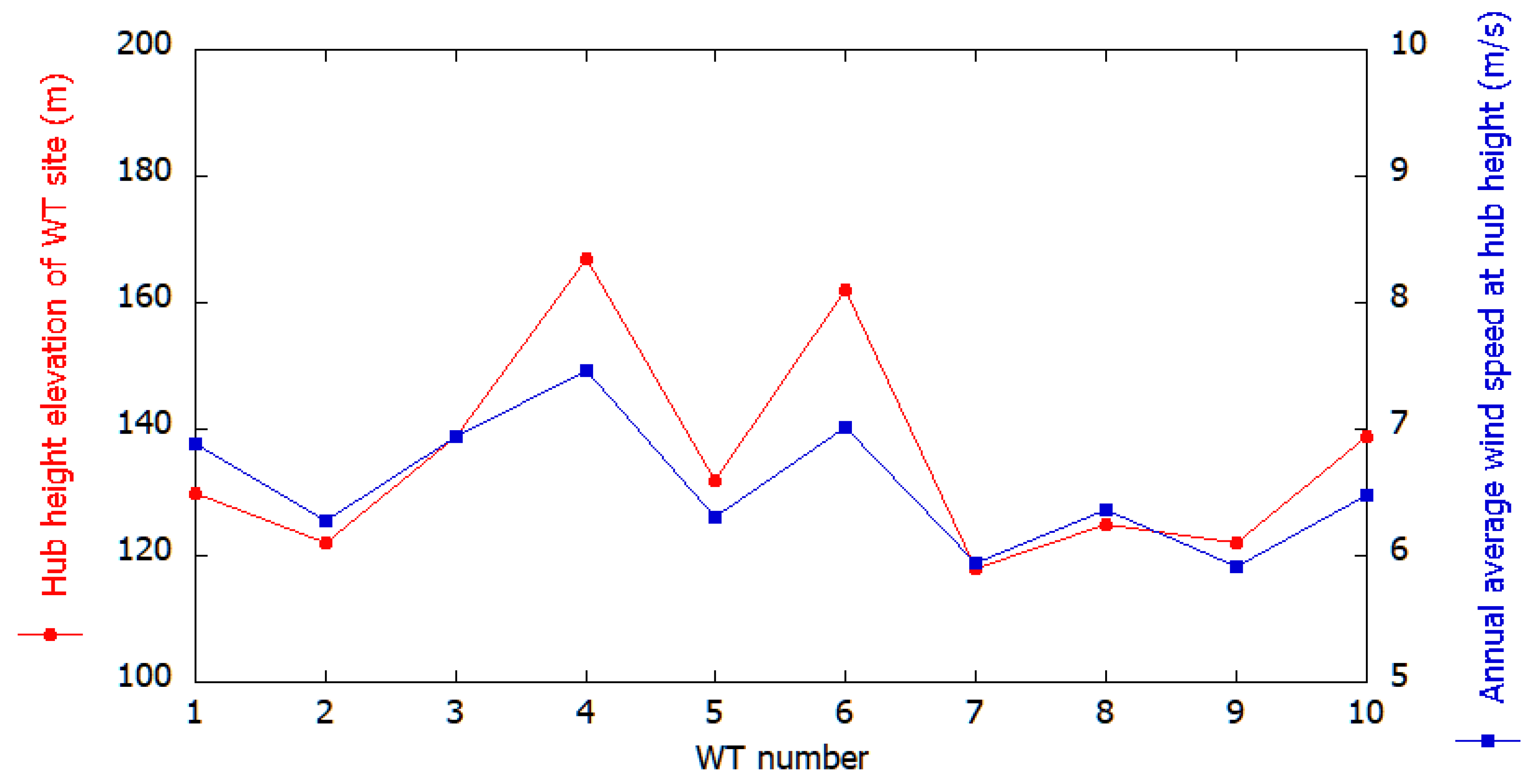
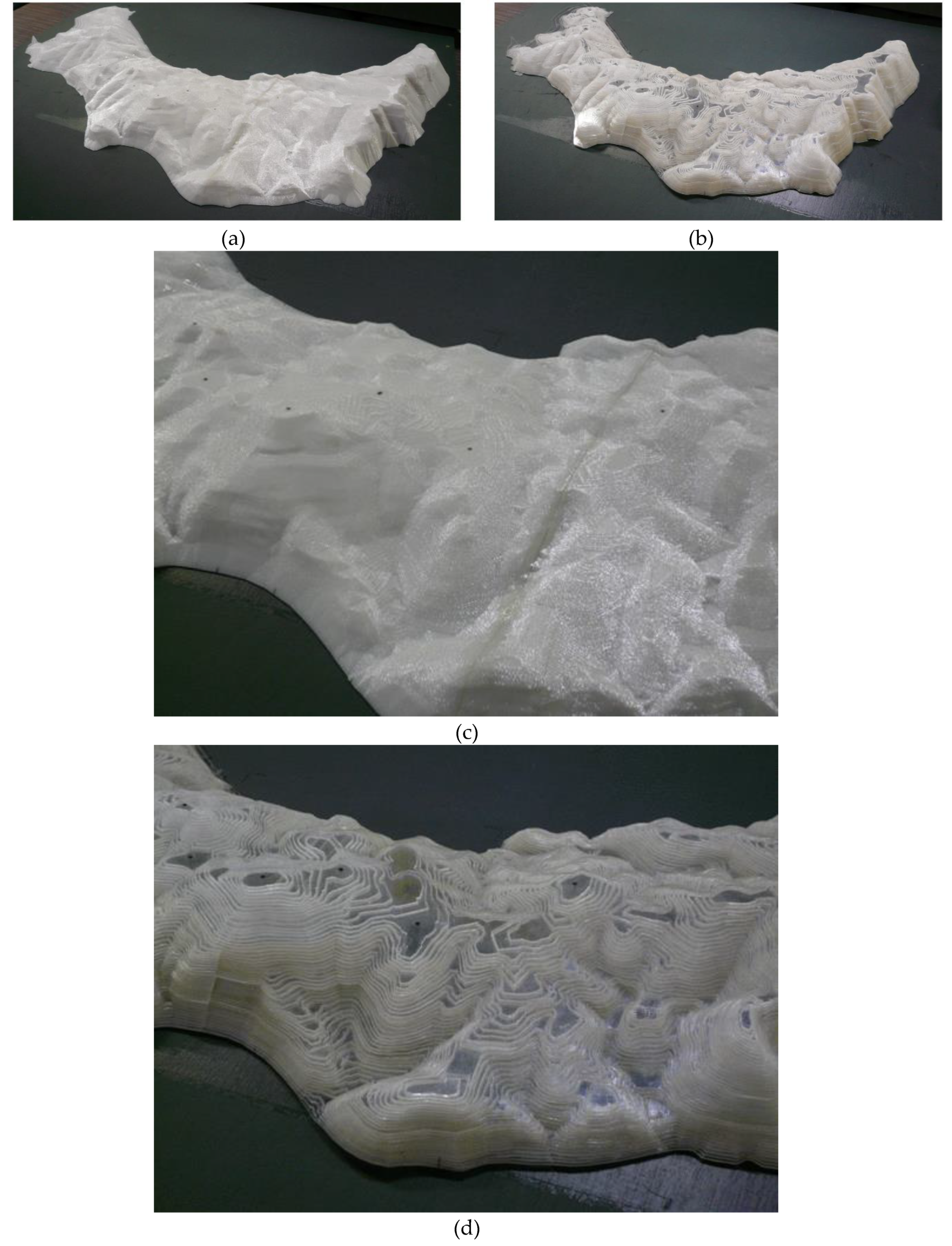
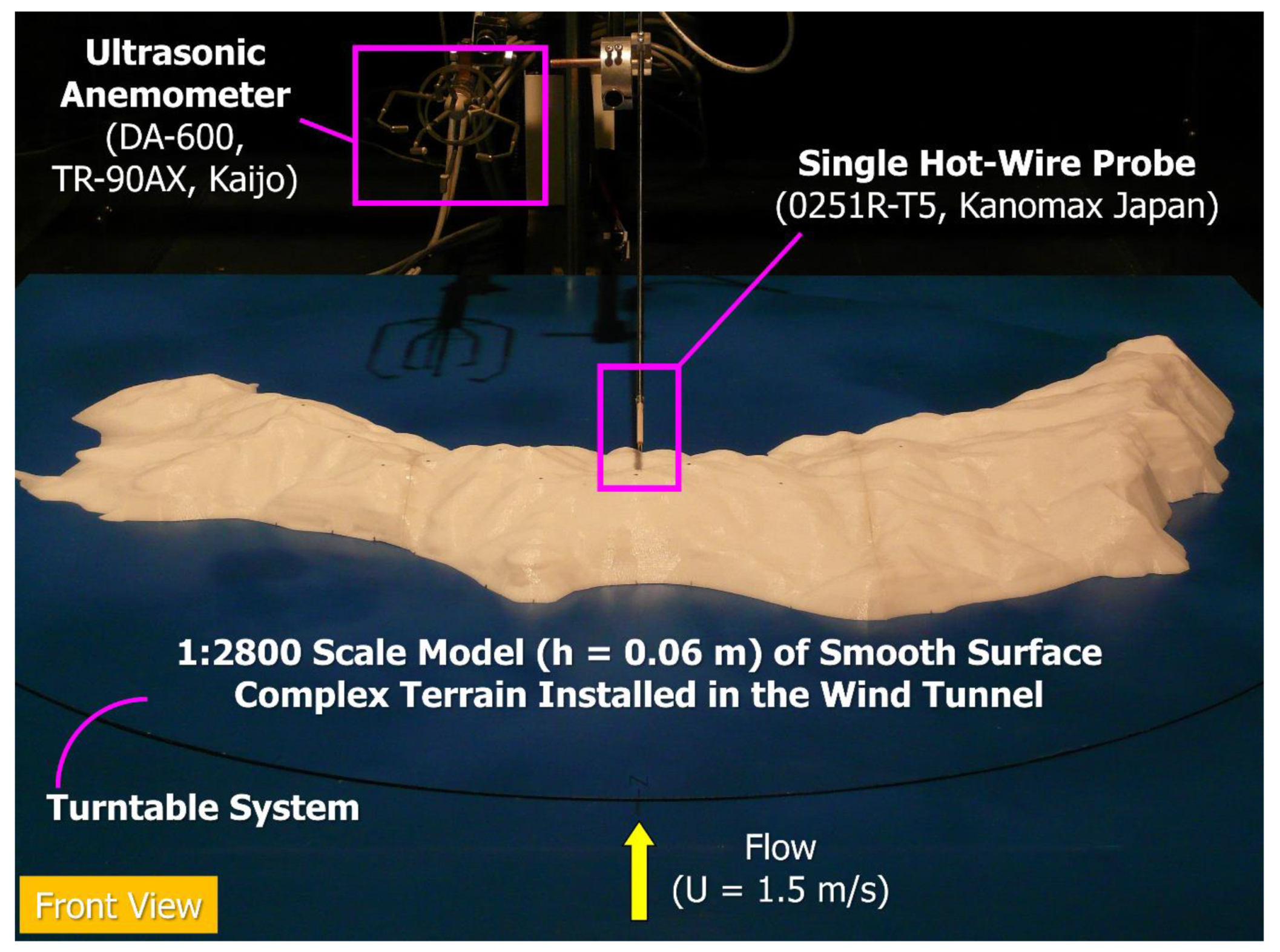
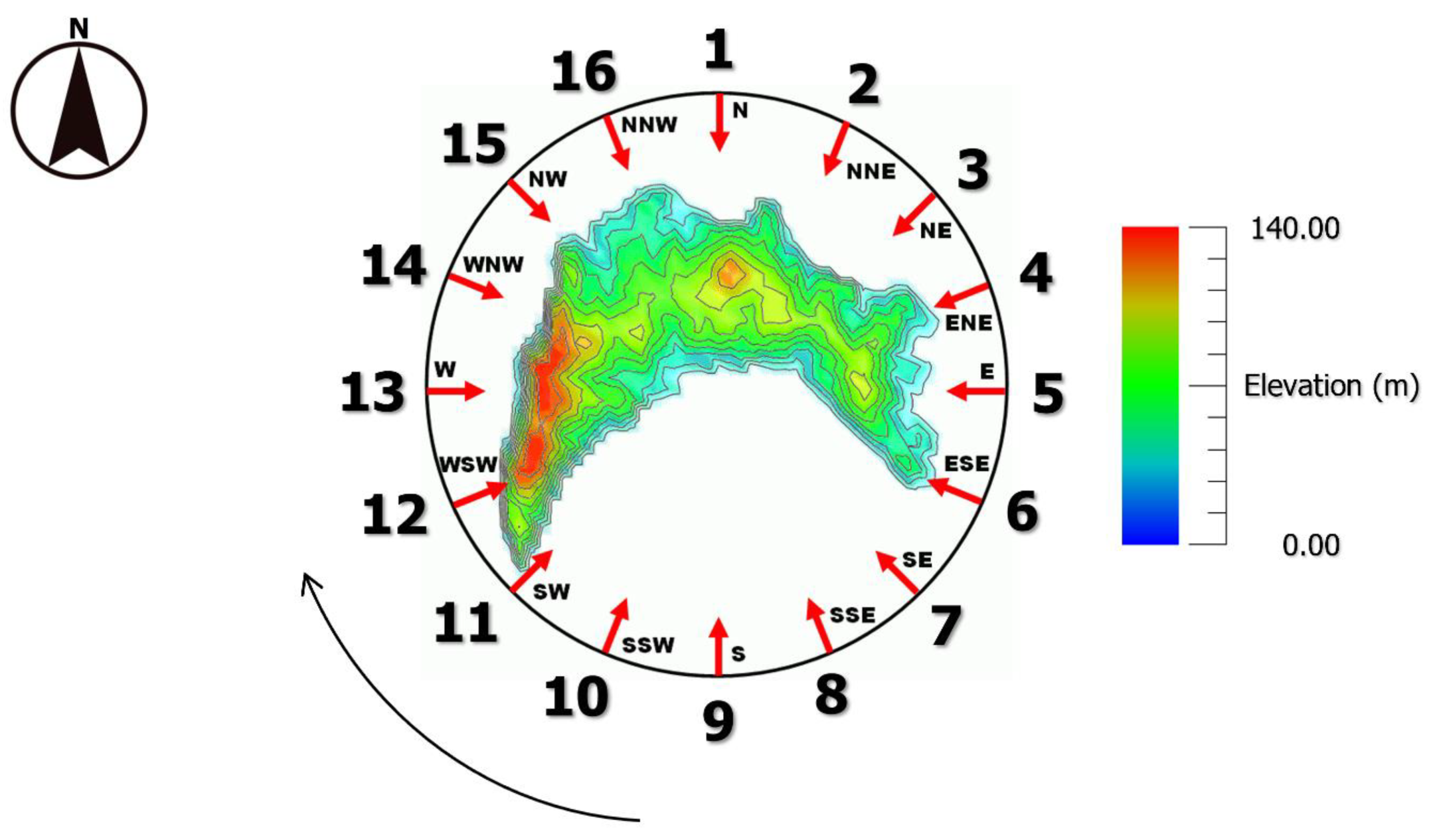

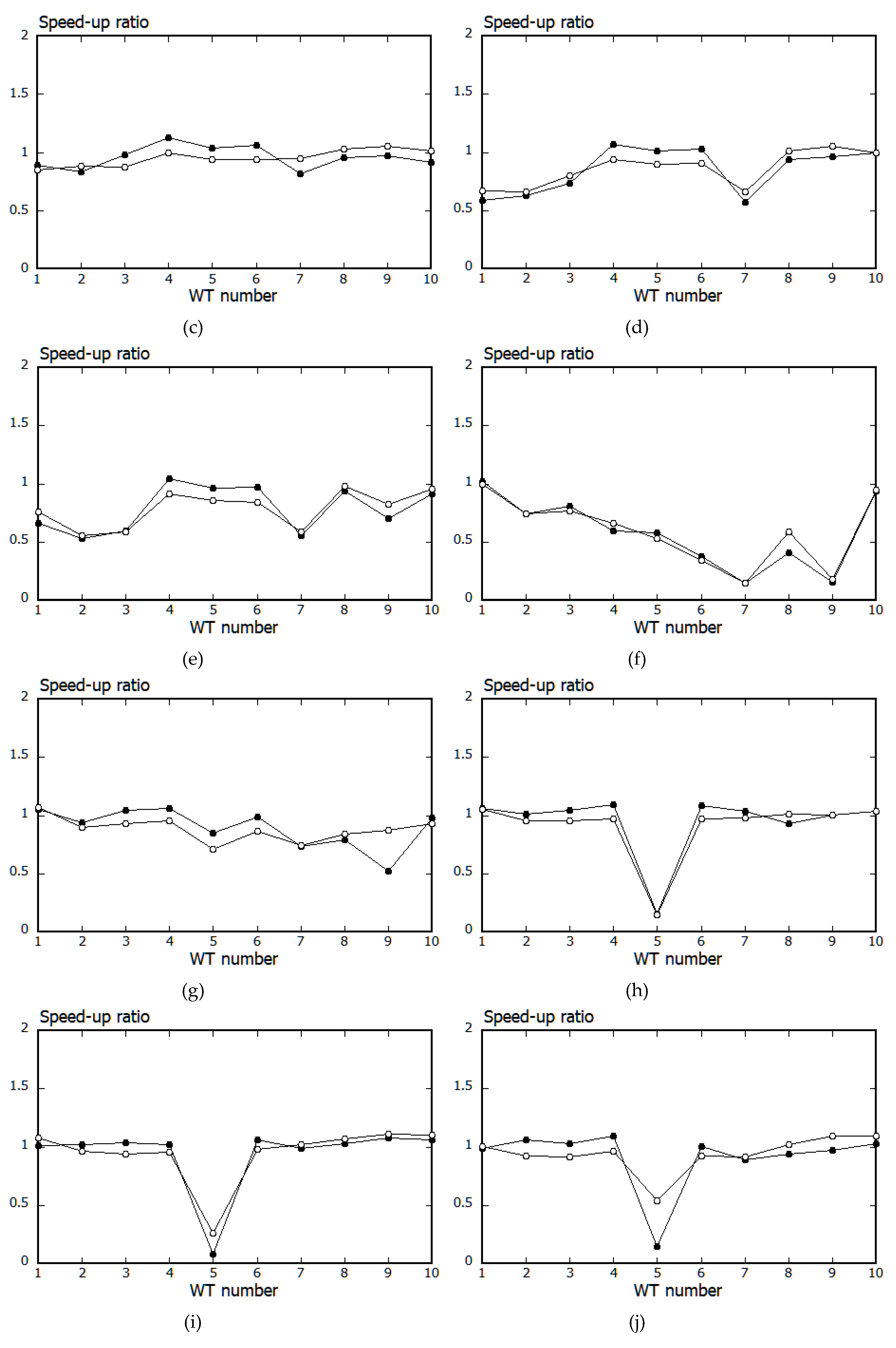
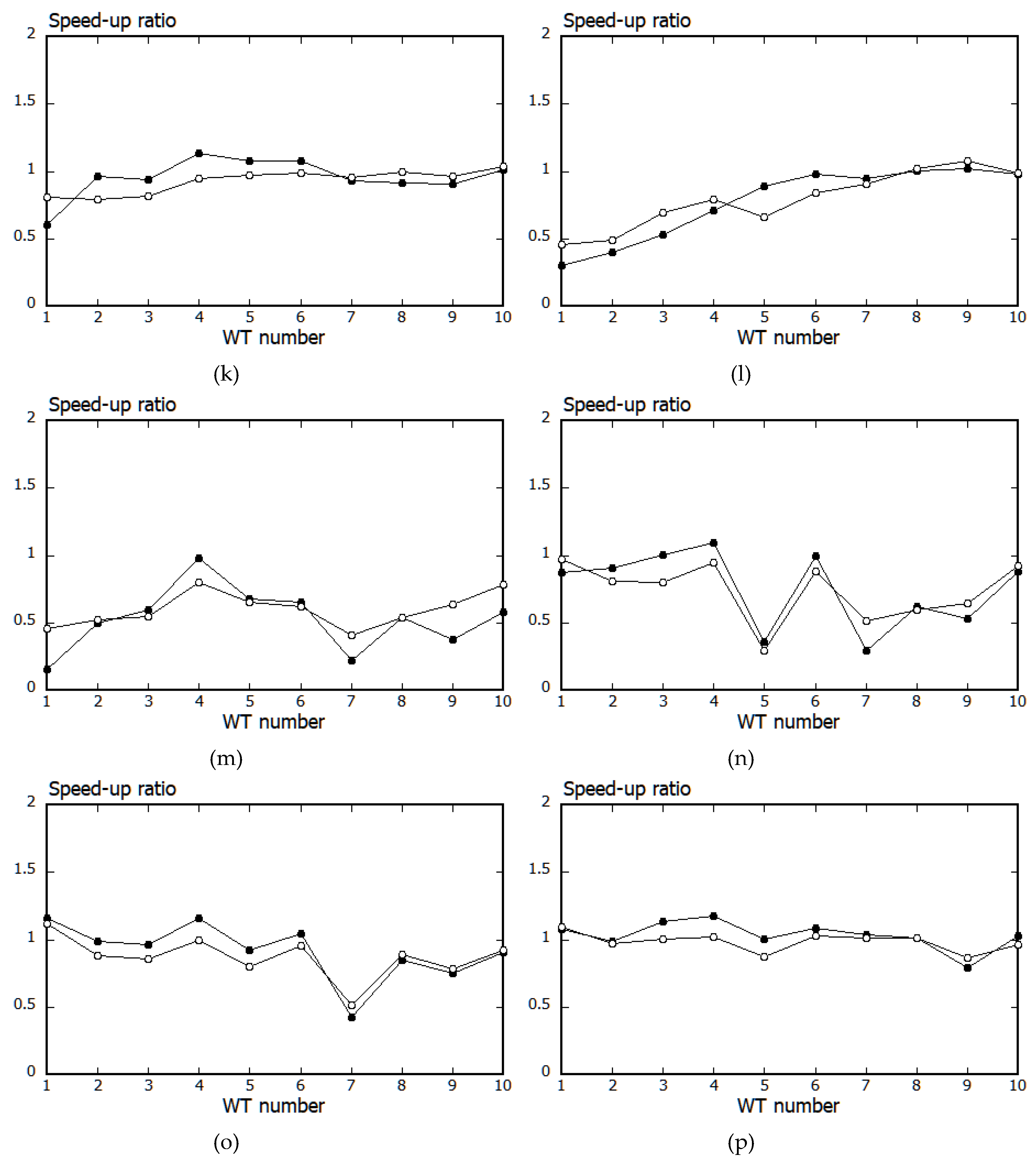
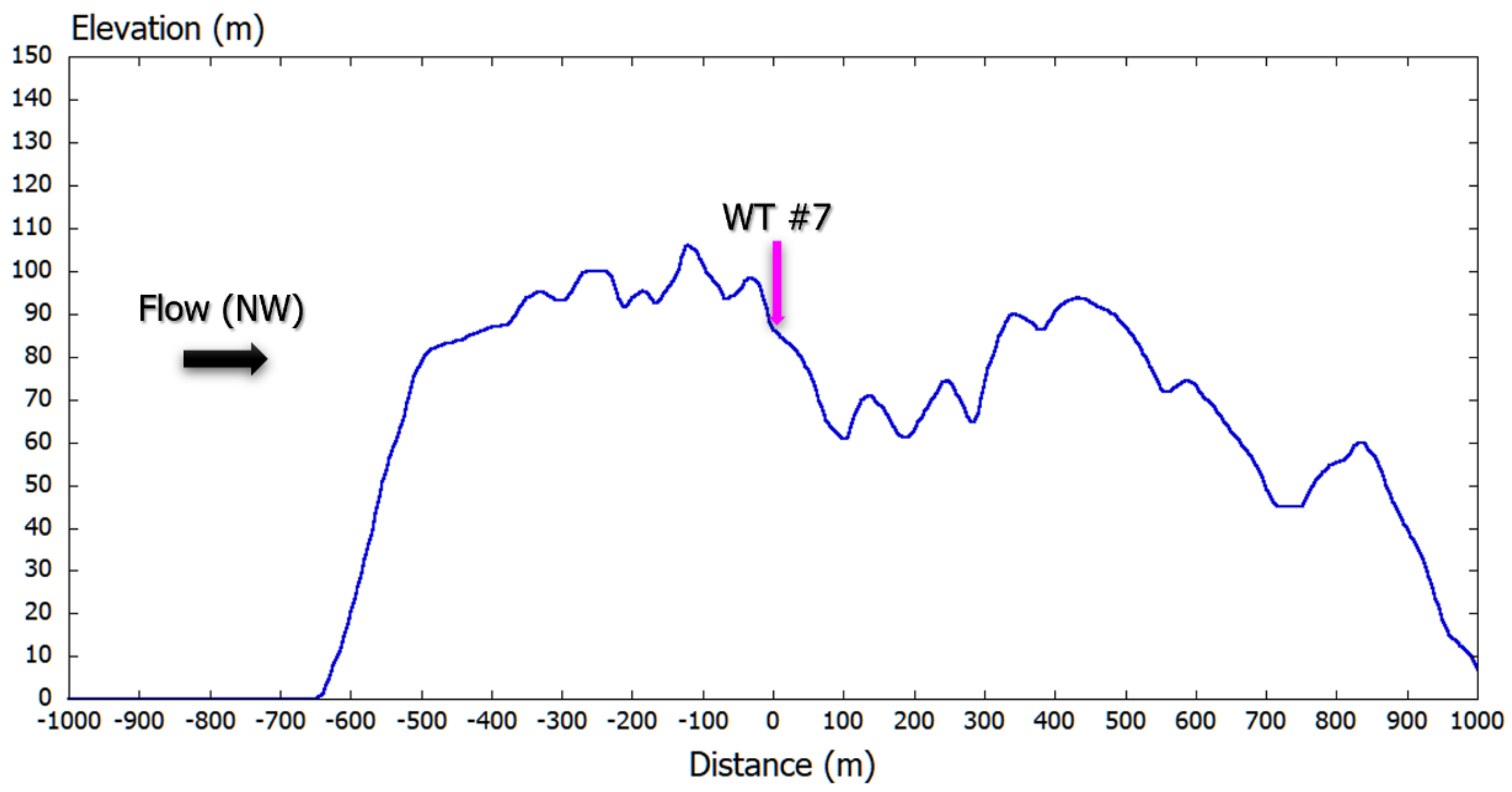
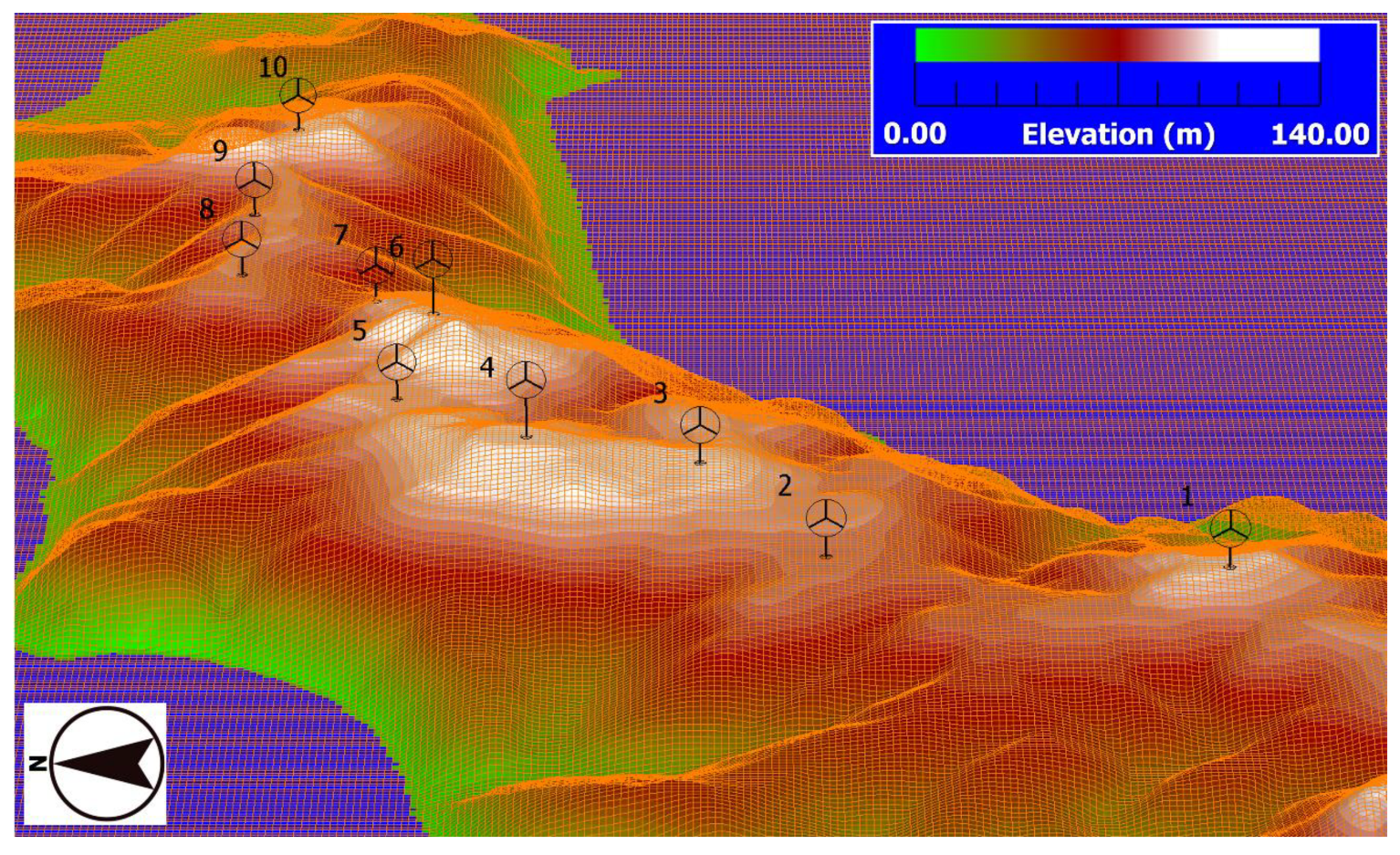
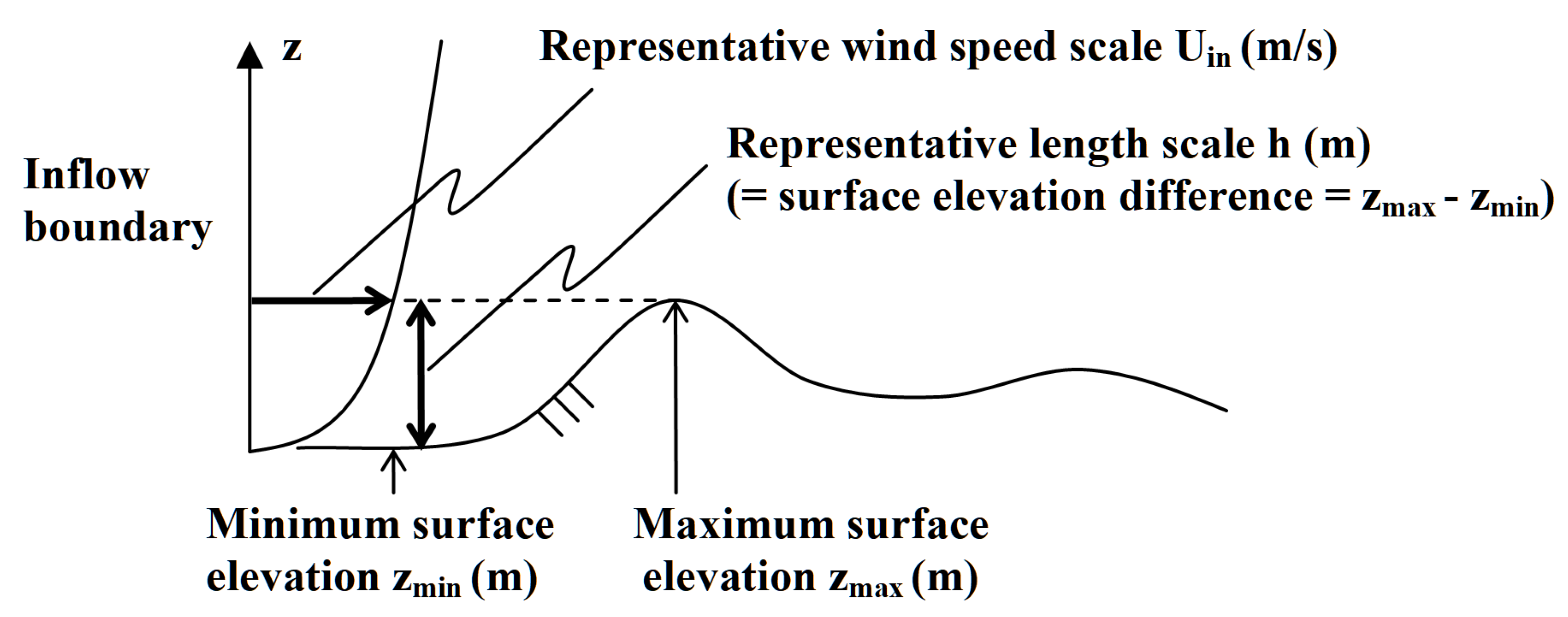
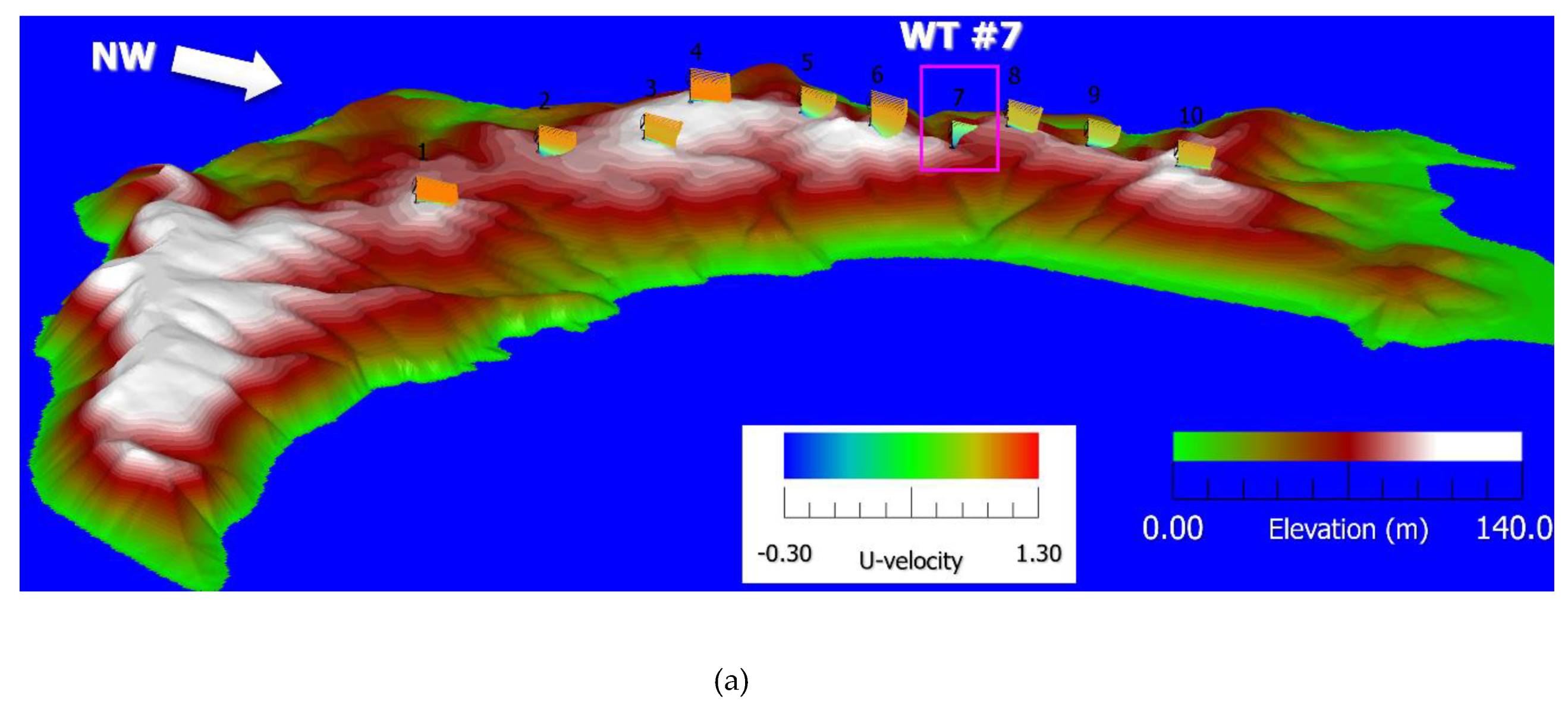
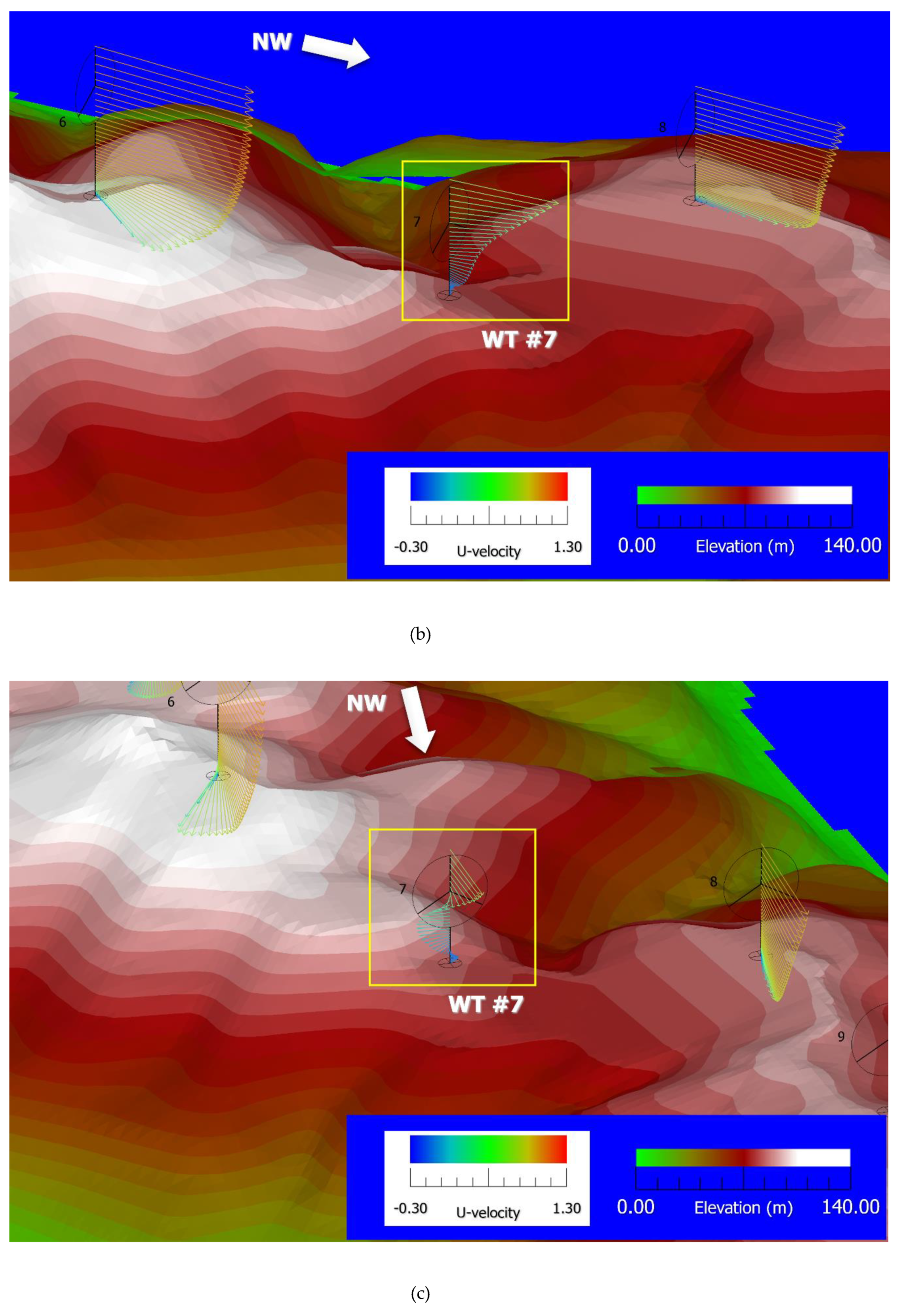
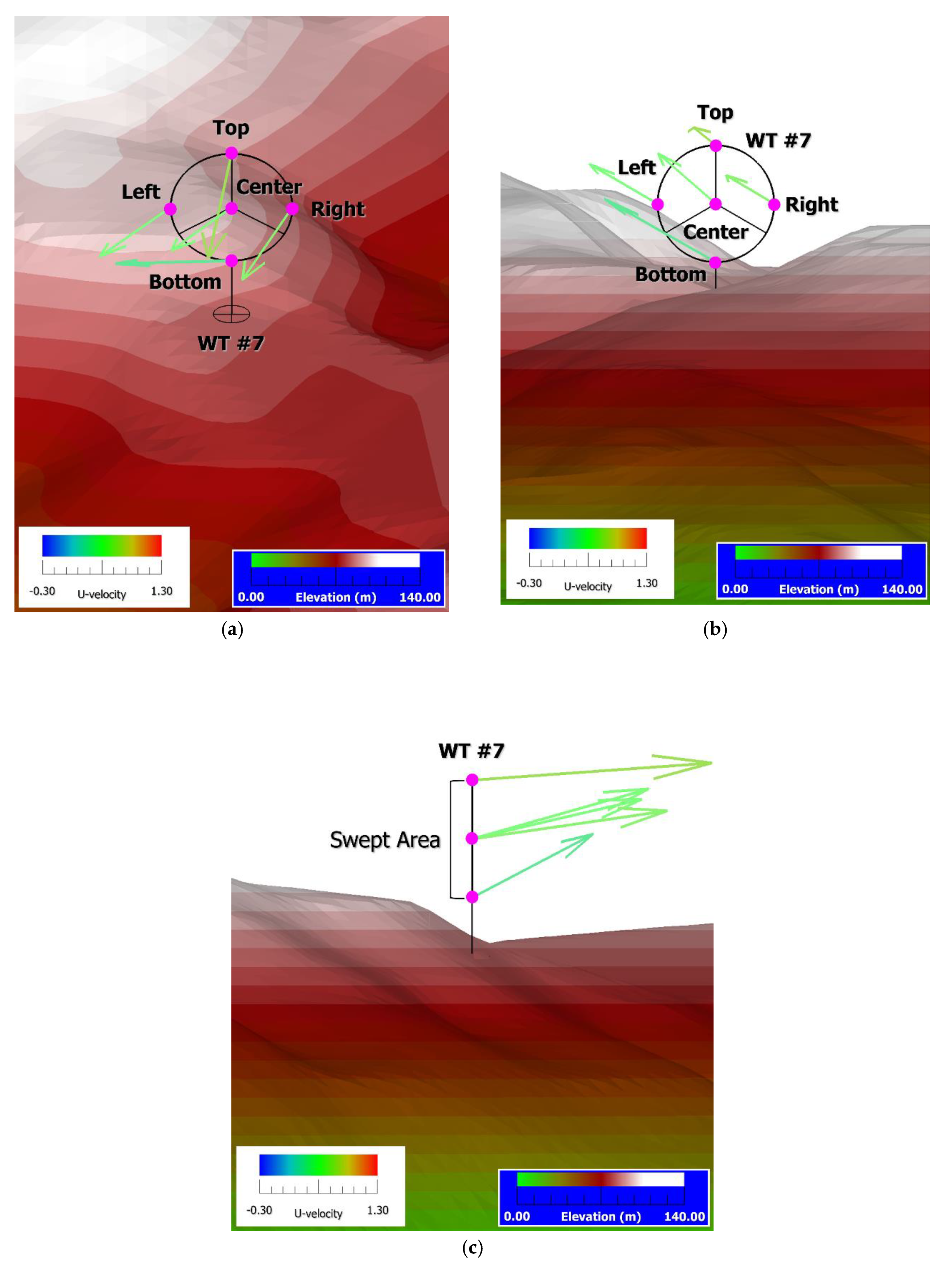

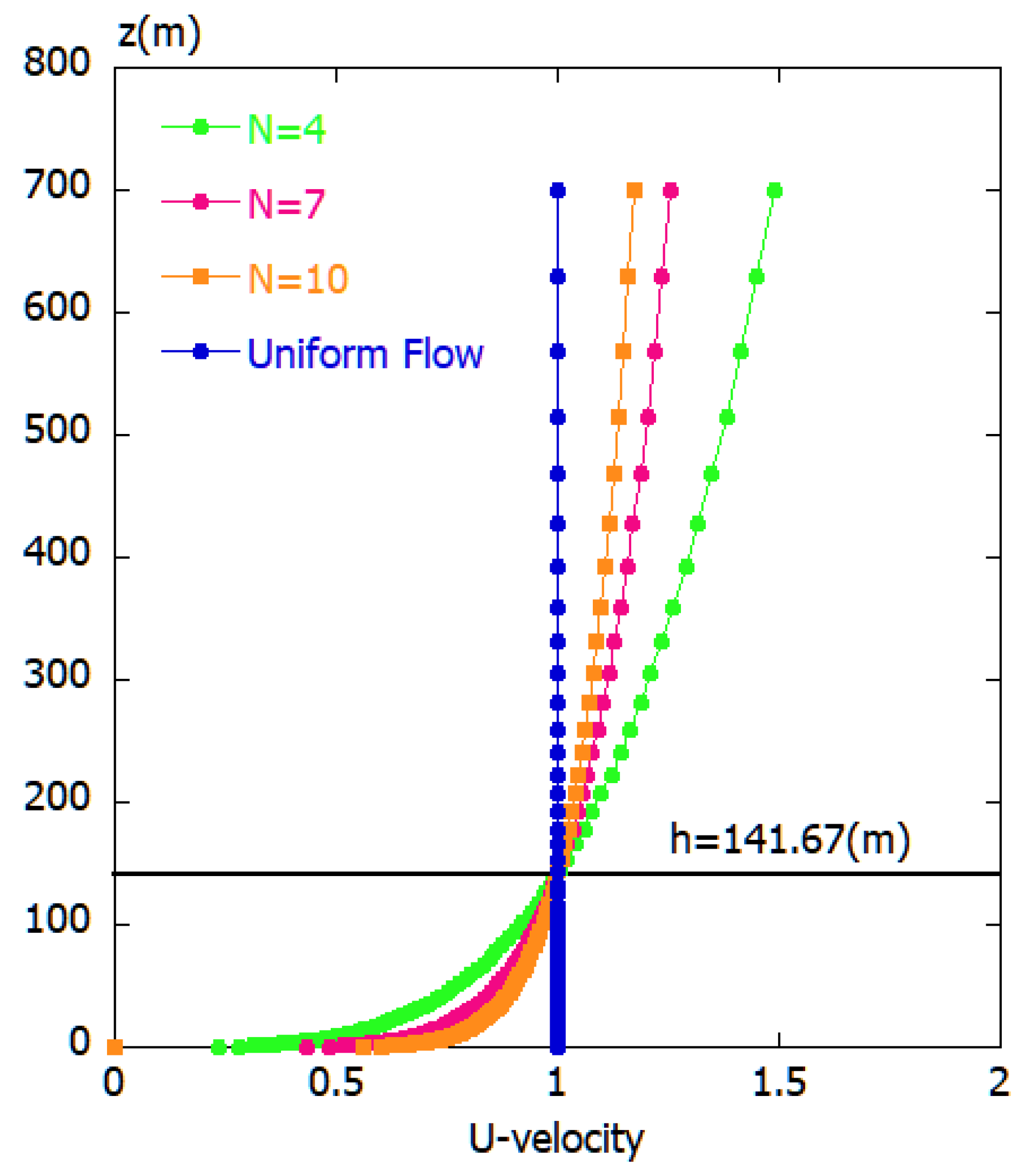
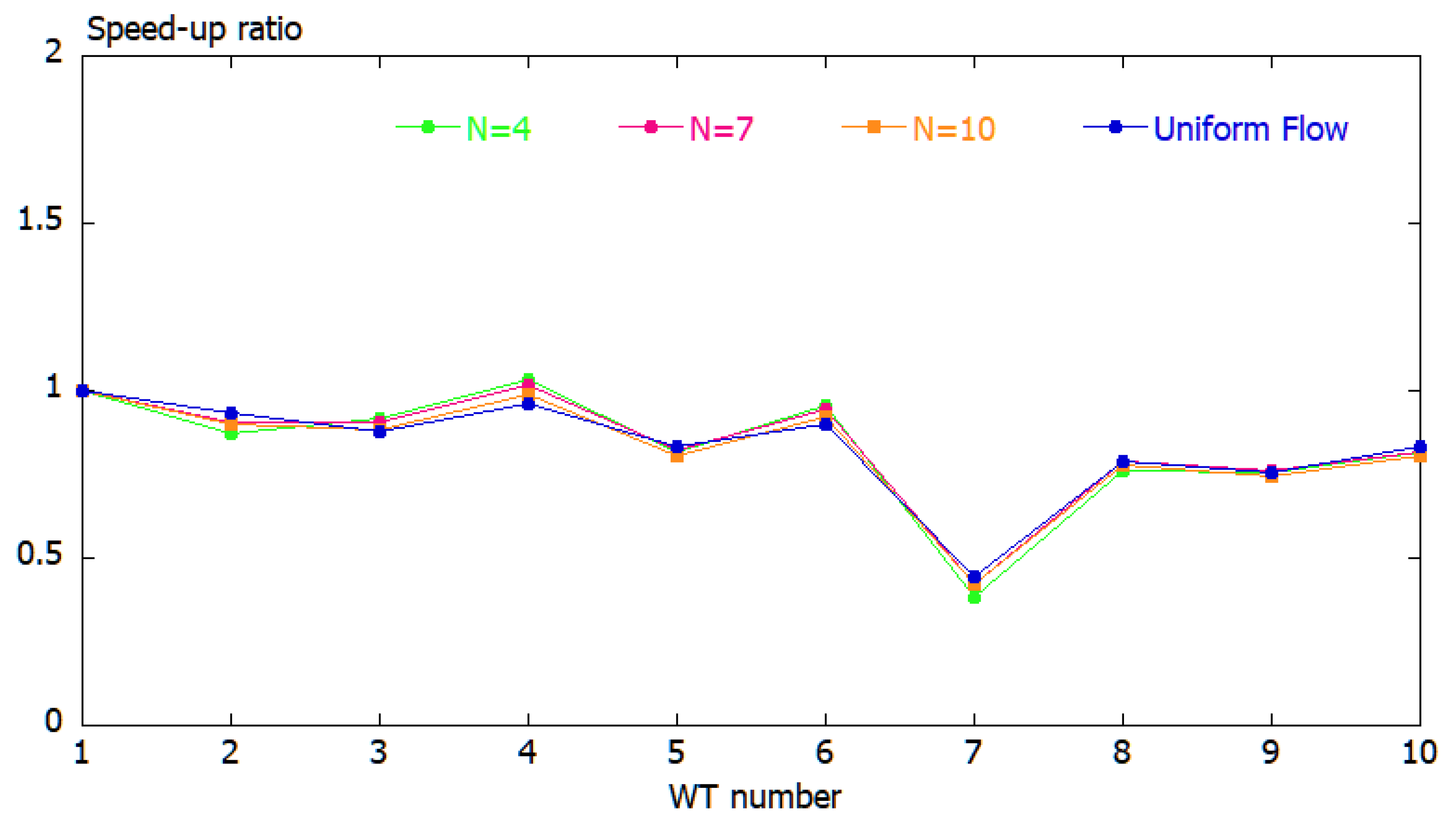
| WT #1–5 | WT #6–10 | |
|---|---|---|
| Output (kW) | 300 | |
| Generator type | Induction | Synchronous |
| Cut-in speed (m/s) | 3.5 | 2.5 |
| Rated wind speed (m/s) | 14.4 | 14.0 |
| Cut-out speed (m/s) | 24.0 | 25.0 |
| Rotor diameter (m) | 29 | 30 |
| Tower height (m) | 30 (WT #4: 45) | 30 (WT #6: 45) |
| Tower Height (m) | Surface Elevation of Wind Turbine Site (m) | |
|---|---|---|
| WT #1 | 30 | 100 |
| WT #2 | 92 | |
| WT #3 | 109 | |
| WT #4 | 45 | 122 |
| WT #5 | 30 | 102 |
| WT #6 | 45 | 117 |
| WT #7 | 30 | 88 |
| WT #8 | 95 | |
| WT #9 | 92 | |
| WT #10 | 109 |
| Hub Height Elevation of the WT Site (m) | Annual Average Wind Speed at Hub Height (m/s) | |
|---|---|---|
| WT #1 | 130 | 6.89 |
| WT #2 | 122 | 6.27 |
| WT #3 | 139 | 6.94 |
| WT #4 | 167 | 7.46 |
| WT #5 | 132 | 6.31 |
| WT #6 | 162 | 7.02 |
| WT #7 | 118 | 5.95 |
| WT #8 | 125 | 6.37 |
| WT #9 | 122 | 5.92 |
| WT #10 | 139 | 6.48 |
| Average value (m/s) | 6.56 | |
© 2020 by the authors. Licensee MDPI, Basel, Switzerland. This article is an open access article distributed under the terms and conditions of the Creative Commons Attribution (CC BY) license (http://creativecommons.org/licenses/by/4.0/).
Share and Cite
Uchida, T.; Sugitani, K. Numerical and Experimental Study of Topographic Speed-Up Effects in Complex Terrain. Energies 2020, 13, 3896. https://doi.org/10.3390/en13153896
Uchida T, Sugitani K. Numerical and Experimental Study of Topographic Speed-Up Effects in Complex Terrain. Energies. 2020; 13(15):3896. https://doi.org/10.3390/en13153896
Chicago/Turabian StyleUchida, Takanori, and Kenichiro Sugitani. 2020. "Numerical and Experimental Study of Topographic Speed-Up Effects in Complex Terrain" Energies 13, no. 15: 3896. https://doi.org/10.3390/en13153896
APA StyleUchida, T., & Sugitani, K. (2020). Numerical and Experimental Study of Topographic Speed-Up Effects in Complex Terrain. Energies, 13(15), 3896. https://doi.org/10.3390/en13153896






